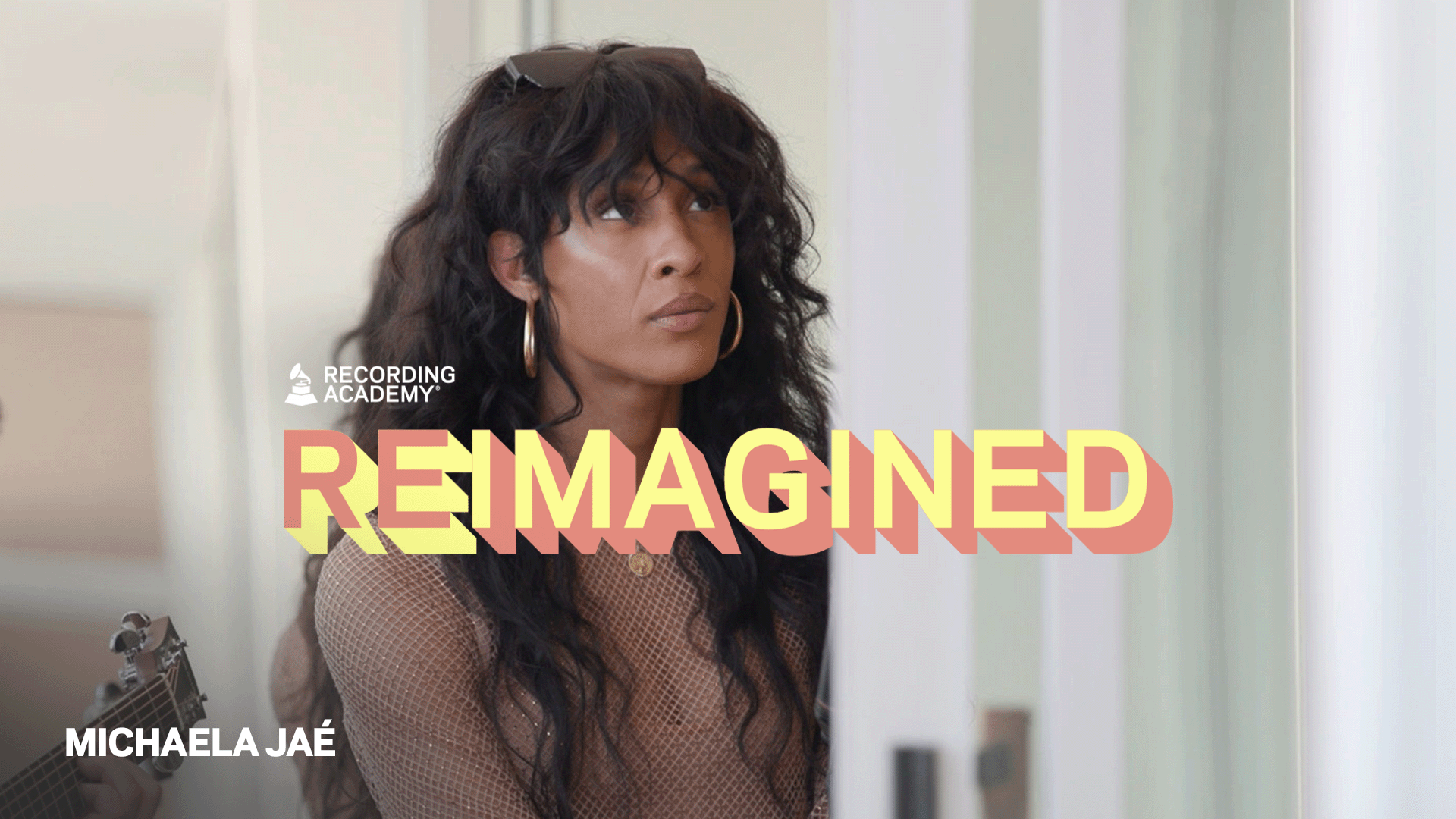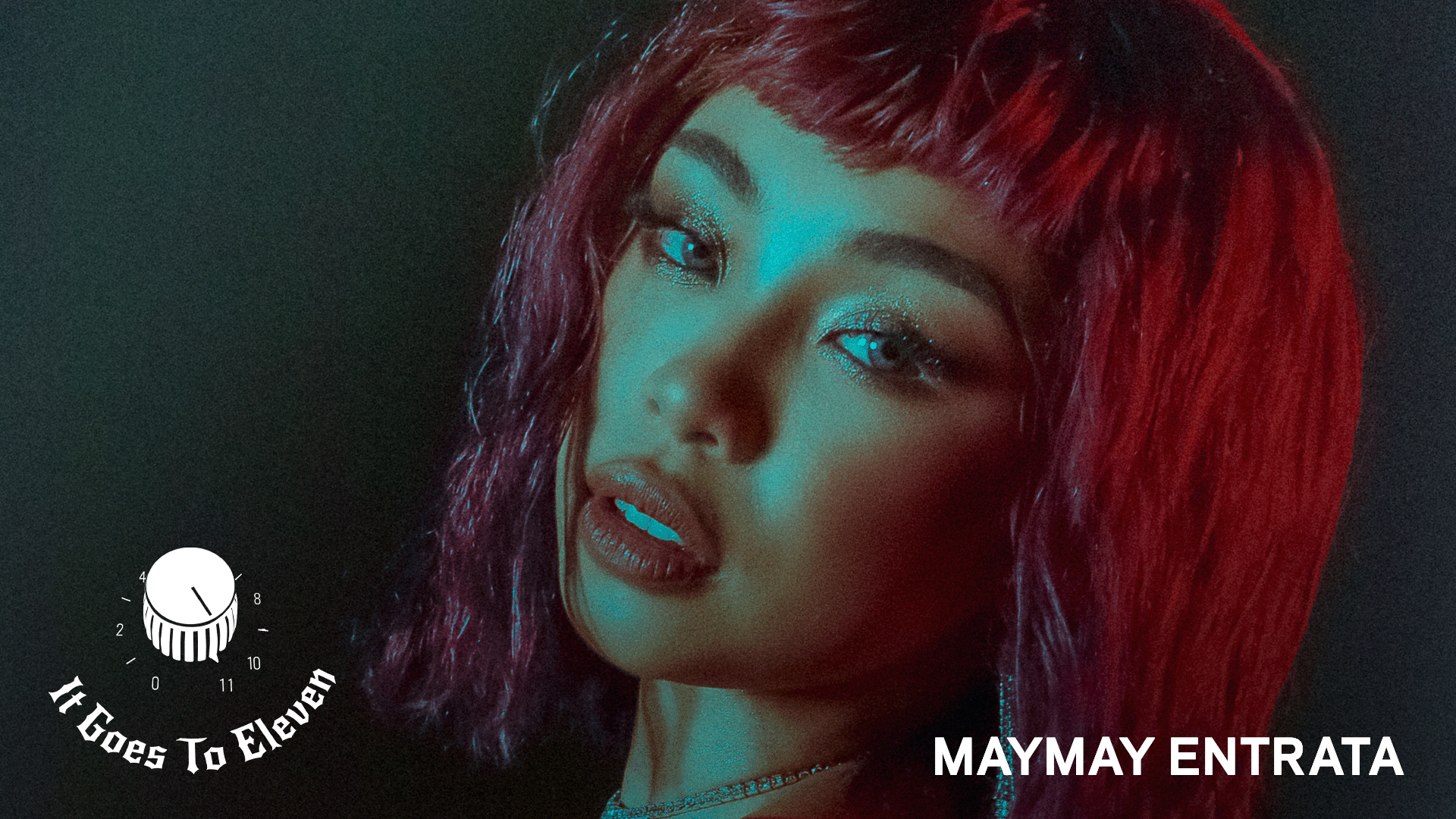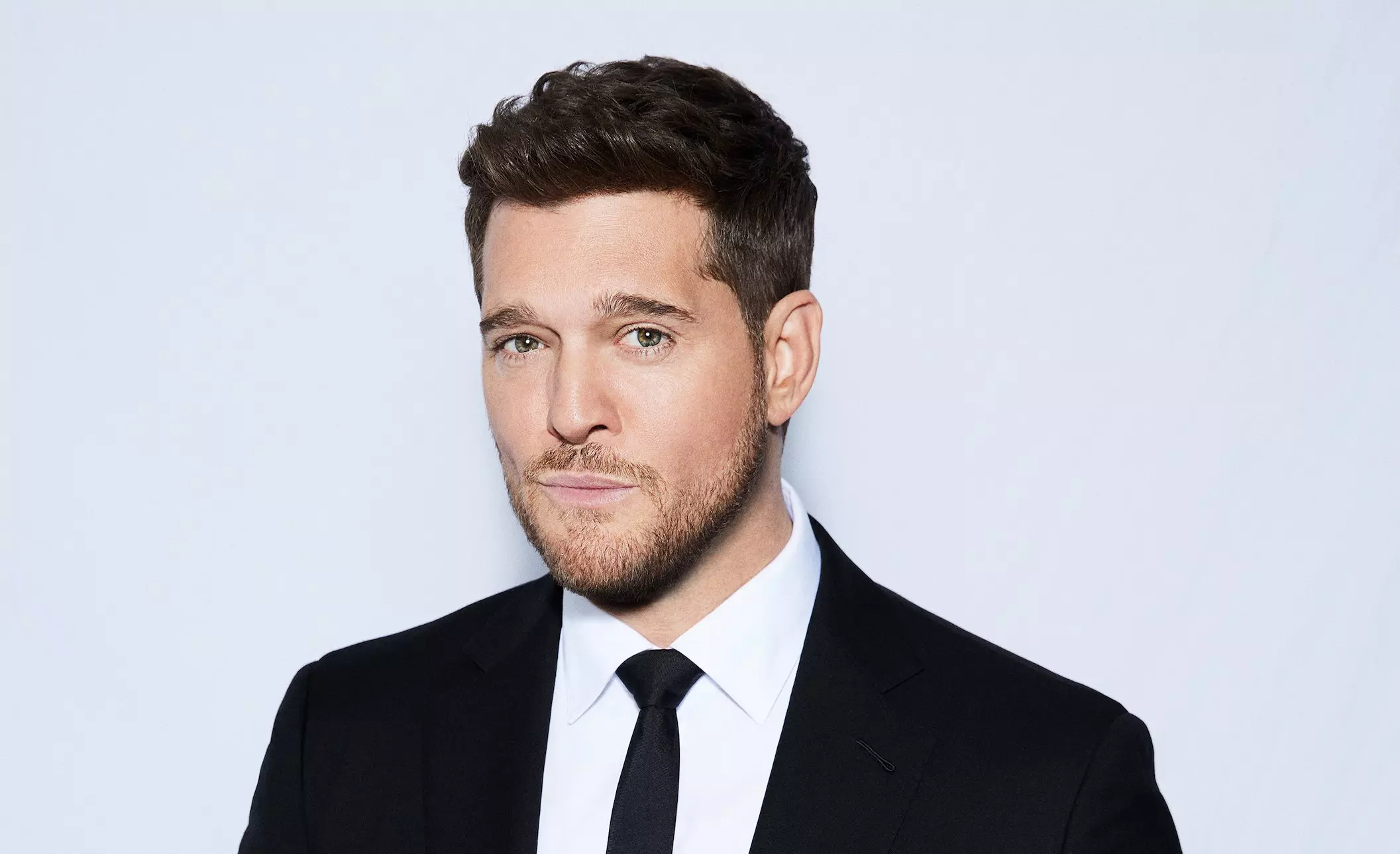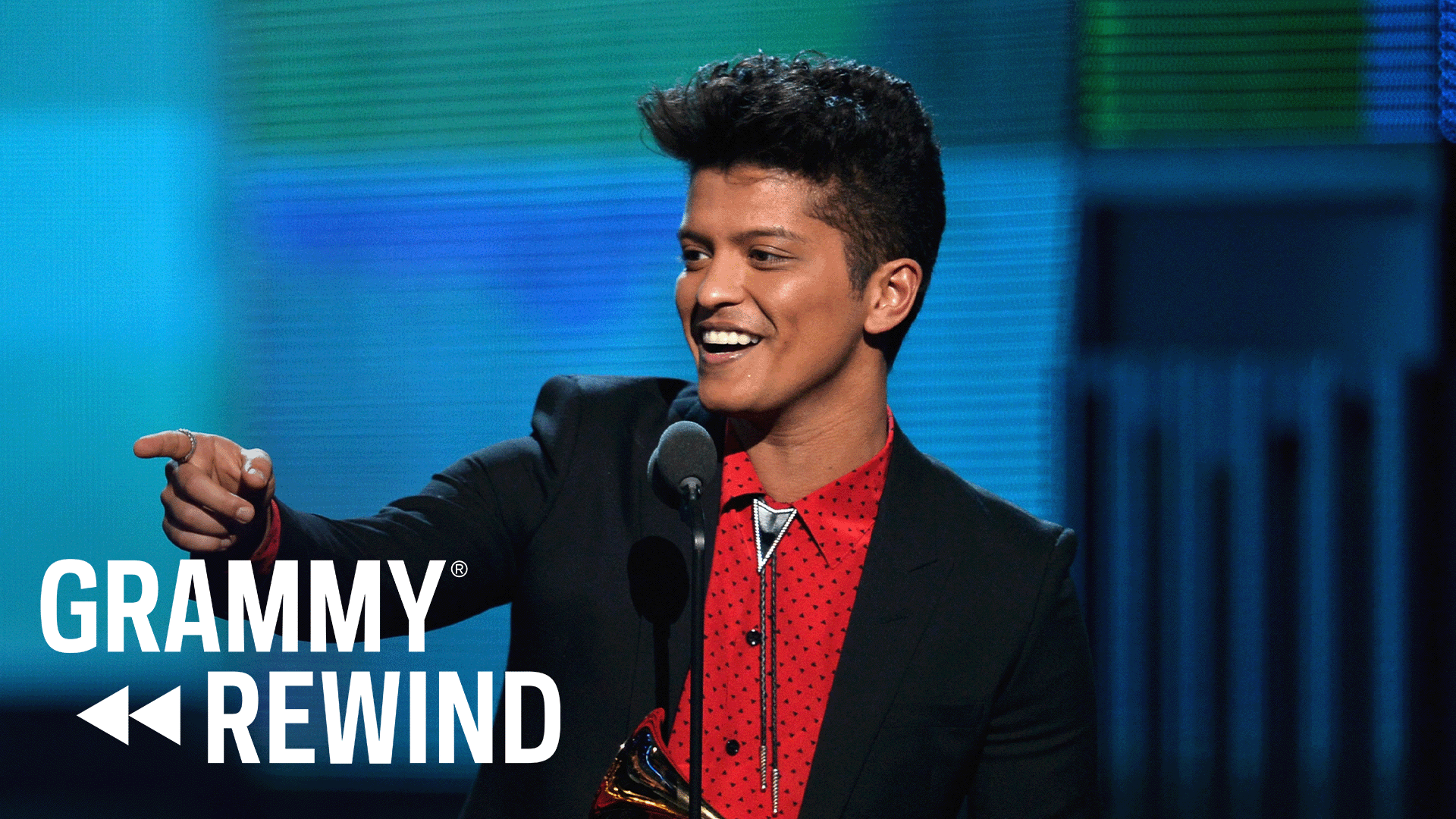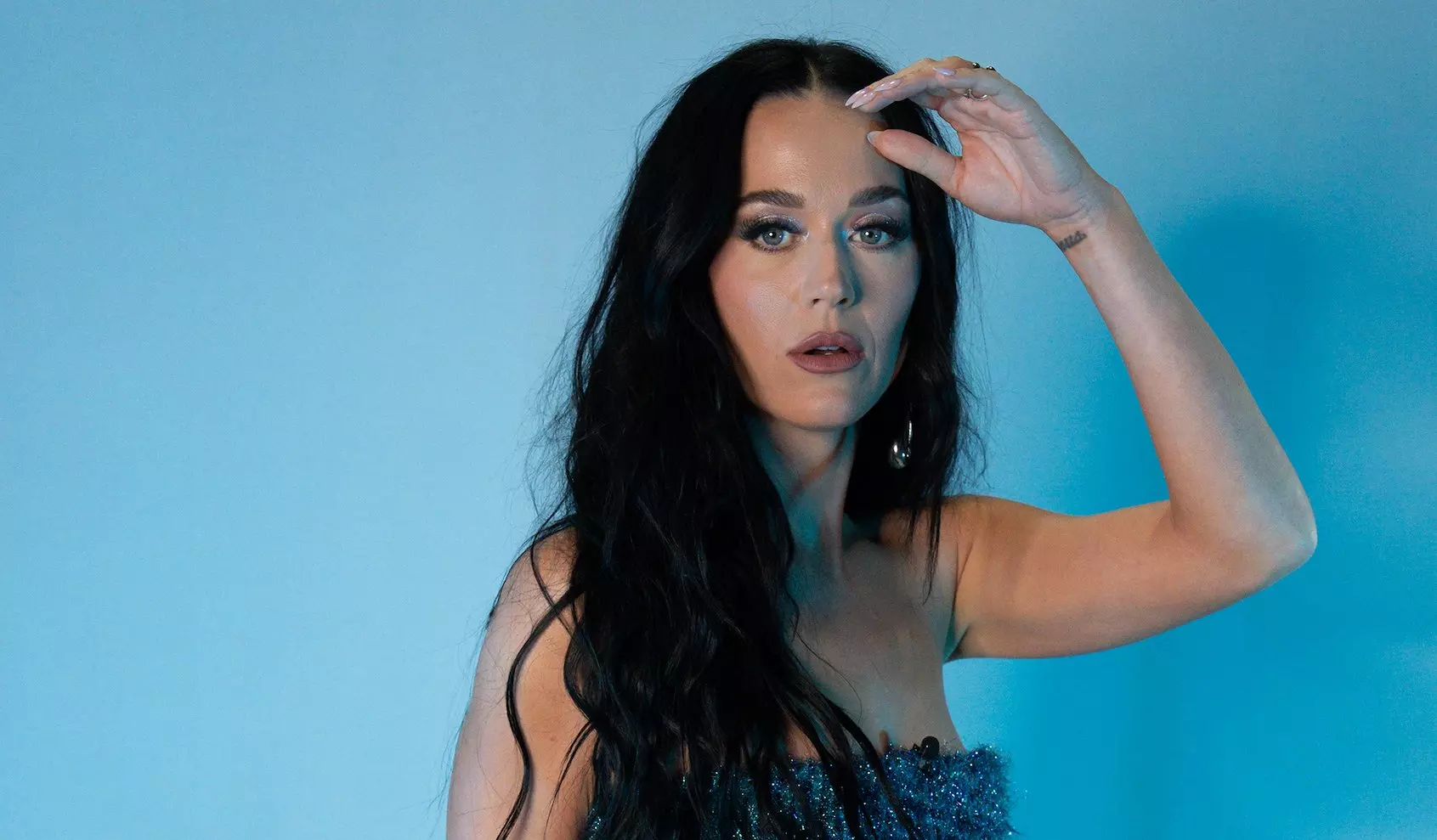Photo: Cindy Ord / Getty Images for SiriusXM
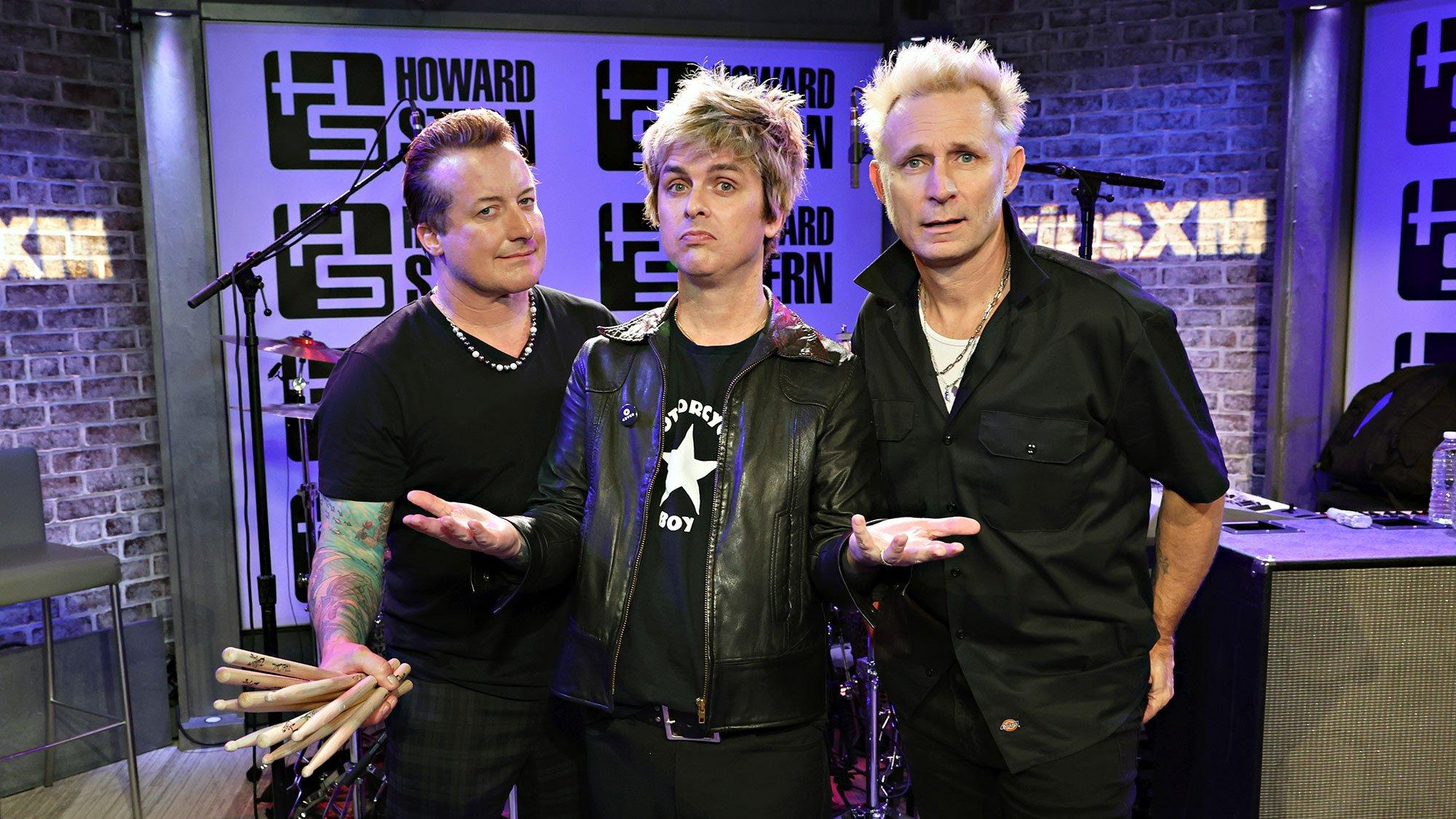
news
Green Day's 'Saviors': How Their New Album Links 'Dookie' & 'American Idiot' Decades Later
The punk stalwarts made a U-turn on 2020's 'Father of All'; with its follow-up, 'Saviors,' they're barrelling forward while honoring their past. Here's how Green Day ramped up to it.
Green Day's new album represents a spiritual link between their past and present. Fittingly titled Saviors, the band's 14th release is wholly in the present while connecting to their lynchpin albums: 1994's Dookie and 2004's American Idiot.
The quartet will tour Saviors — which was released Jan. 19 and shares a title with the tour — in conjunction with the 20th and 30th anniversaries of Green Day's major albums. As with any major milestone, creating a new record as two of their biggest albums aged created a bit of wistful creative confusion.
"Did I want it to be an old-school Green Day punk record, or did I want to do something that felt more lush and stadiumlike?" leader Billie Joe Armstrong told Vulture. "When we saw it come together, I remembered thinking, Oh, this is the connection. Saviors does feel like a trifecta with Dookie and American Idiot where it feels like a life's work.
"I went from not knowing what the hell I was doing," Armstrong continued, "to going, 'Oh gosh, we managed to bridge the gap between those two huge albums.'"
This summer, listeners can behold the triad: Green Day will perform the relentless, hilarious, melody-stuffed Dookie and stadium-sized, polemical American Idiot in full. Tickets to the international dates — with support from the Smashing Pumpkins, the Hives, the Linda Lindas, and many more — can be found at their website.
With Saviors out in the world, here's a breakdown of the ramp-up to the album.
Their Previous Album Took A Detour, But They're Back On Course
Green Day's last album, 2020's Father of All Motherf—ers — commonly shortened to Father of All… — was arguably their most divisive to date.
"Motown, glam and manic anthemic. Punks, freaks and punishers!" is how Armstrong, bassist Mike Dirnt and drummer Tré Cool described it. Which sums up its 10 frenzied tunes, which add up to a very lean 26 minutes.
But at times, Father of All… didn't quite sound like Green Day, but an unpredictable Frankenstein of retro and modern styles, a feel-bad Black Keys. And, sadly, the pandemic precluded them from proving these songs' mettle live.
Their next album would be tailored to the live experience — consciously or not.
Saviors Was Almost Called 1972
And in many regards, Green Day decided to go back to their roots with Saviors. In fact, the original title was the year all three men were born.
When Green Day banded together in London with Rob Cavallo — who produced Dookie and American Idiot, among other career highlights — the album had the working title of 1972.
The album's title track resembles some of the sentiment on American Idiot, Armstrong told USA Today. "Saviors" centers on the feeling of being "desperate for answers and leadership and getting out of the mess we’re in."
Until the end of the recording process, Saviors didn't have its lead single, "The American Dream is Killing Me."
"The American Dream Is Killing Me" Came Late In The Game
Crafted as "a look at the way the traditional American Dream doesn't work for a lot of people" — as the band put it in a statement — "The American Dream is Killing Me" actually dates back to four years ago.
"It was one of the last things we recorded," Dirnt told Rolling Stone. "Rob's like, 'What else do you got?' As we get towards the end of recording, it was two songs. It was that one and 'Father to a Son.' And those two songs, Rob's like, 'Oh, you've got to record those.'"
They're Not Getting Sucked Into The Past
Two albums, from decades ago, performed front-to-back, in stadiums the world over: that could categorize Green Day as a nostalgia act. But Green Day are nostalgic for nothing; rather, they still harbor the ethos of their punk youth.
"I still try to maintain that kind of spirit about what we do," Armstrong told People, "which is just being independent and free to express yourself the way that you want." That might mean a surprise set inside a New York City subway station, or announcing their Saviors tour plans on "The Howard Stern Show."
"I think one of the strong points of this band is we just stay in the moment," Dirnt said to Rolling Stone. "Don't look backwards, and don't look too far forward. Stay in the moment, but appreciate the moment." And the Saviors tour will provide so many moments to remember.
10 Bay Area Punk Bands To Know: Dead Kennedys, Operation Ivy, Green Day & More
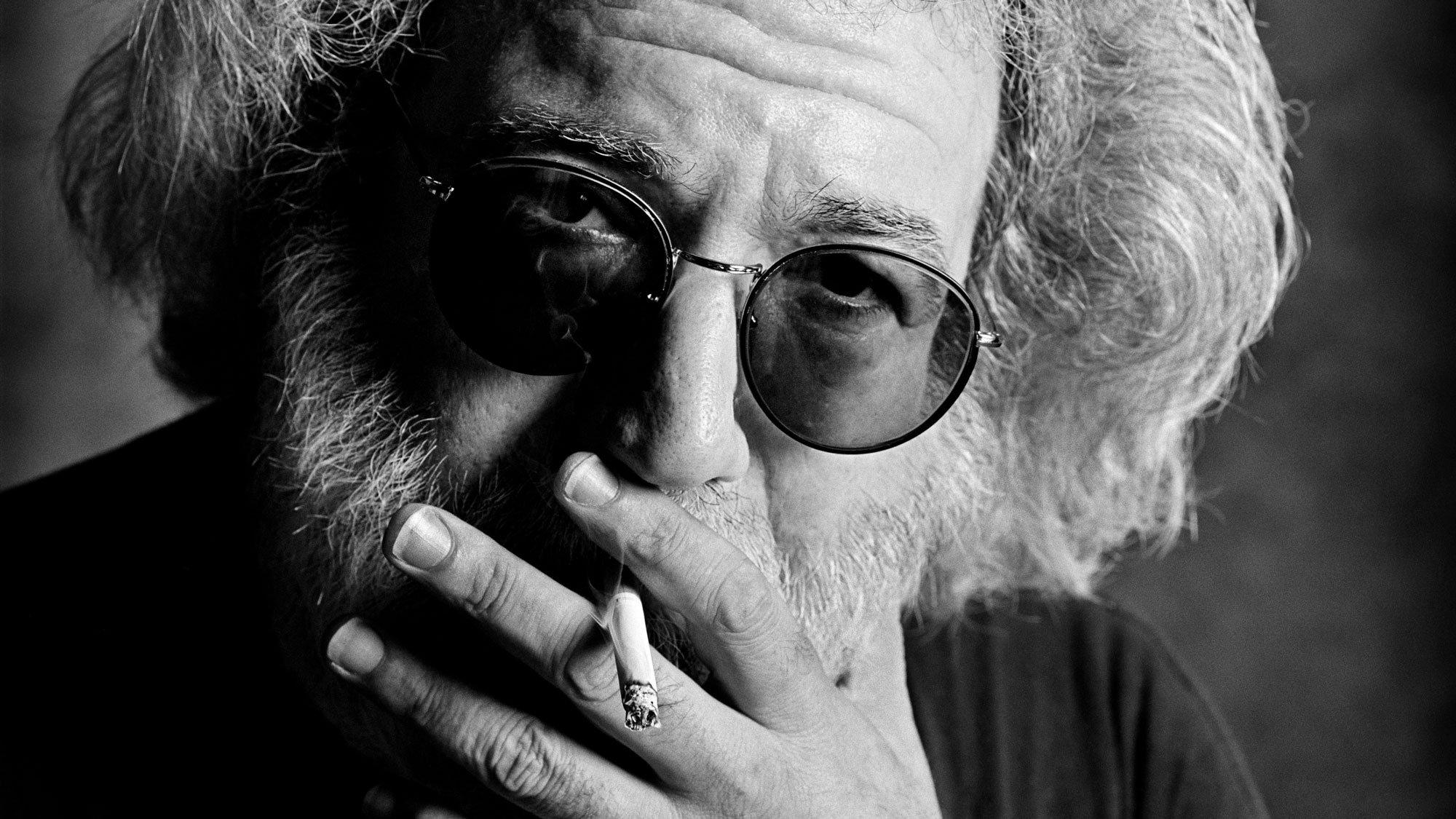
Photo: Jay Blakesberg
interview
Jay Blakesberg On RetroBlakesberg GRAMMY Museum Exhibit: Bringing 30 Years Of Music To Life, From Grateful Dead To Green Day
Iconic photographer Jay Blakesberg discusses his exhibit, RetroBlakesberg: The Music Never Stopped, opening Nov. 8 at the GRAMMY Museum.
Jay Blakesberg’s solo exhibit RetroBlakesberg: The Music Never Stopped at the GRAMMY Museum takes visitors on a captivating journey through his extraordinary 30-year career in music photography, spanning 1978 to 2008.
On view from Nov. 8 to June 15, 2025, this exhibit showcases Blakesberg's extensive collection of over 150 film photographs that highlight pivotal moments in music history. From the raw energy of live performances to intimate artist portraits, the exhibit features iconic musicians such as the Grateful Dead, Neil Young, Snoop Dogg, Radiohead, and more.
Growing up in New Jersey, Blakesberg developed a profound passion for the Grateful Dead and music photography, igniting a lifelong journey of capturing the essence of the artists who create the music we all love — from rock and grunge to hip-hop, psychedelic, folk, blues, and beyond. RetroBlakesberg invites visitors to step into a visual narrative that chronicles the sounds, scenes and stories that have shaped popular music.
Exhibit highlights include:
More than 120 photos of musicians, shot on film, including Dr. Dre, Björk, Nirvana, Tom Waits, and Tracy Chapman.
A special series of 20 "blue" portraits, featuring artists like Joni Mitchell, Green Day, Ice-T, and The Flaming Lips, created using tungsten-balanced film in daylight for a unique blue hue.
Captivating images documenting the Grateful Dead and the vibrant, psychedelic culture surrounding them, a nod to Blakesberg’s lifelong inspiration since he was a teen.
Read on to hear from Blakesberg himself on how he captured these iconic moments, the inspiration behind his creative choices, and what it means to showcase his life’s work at the GRAMMY Museum.
Don’t miss your chance to experience this unique collection that has captivated audiences at the Morris Museum and the Contemporary Jewish Museum. Explore grammymuseum.org and buy tickets to witness music history come alive through Blakesberg’s lens.
This interview has been edited for clarity and length.
Your exhibit, RetroBlakesberg: The Music Never Stopped, spans three decades of music photography. What do you feel has changed the most about the live music scene from 1978 to 2008, and how did that influence your work behind the camera?
The live concert industry has changed radically since I first started shooting. In the beginning, I was just a kid with a camera walking into a concert without a press pass. This was before corporate rock ‘n’ roll began restricting photographers, so back then, anyone could bring a camera to a show. By the mid to late '80s, however, when I started shooting professionally, credentials were required to bring a camera to larger venues. Thankfully, there were still small venues where up-and-coming bands like Jane’s Addiction, Soundgarden, and the Butthole Surfers were accessible without special credentials.
As the industry evolved, so did photography. Cameras improved, film quality advanced, lenses became sharper, and the lighting at concerts became more sophisticated. These changes allowed me to capture more dynamic images between 1978 and 2008.
When I first started, I focused solely on live concert photography. However, I quickly realized that to get my work featured on magazine covers, in editorial stories, or even on album covers, I’d need to take portrait photos as well. By the late '80s, I started doing portrait work, which was a significant shift — from relying on stage lighting and venue access to working one-on-one with iconic artists.
Tracy Chapman | Jay Blakesberg
The exhibit features 150 film photographs. What made you continue shooting on film for so long, and how do you think it shaped the look and feel of your work?
In 2008, I fully transitioned to digital photography. During the pandemic, my daughter, Ricki, came up with the idea to start a new Instagram page called "RetroBlakesberg," dedicated exclusively to my film photographs. There’s only a brief overlap in my work when I was shooting both early digital and film, so this page highlights a specific part of my career. Even though I had established a digital studio early on, we continued shooting on film for a while, delivering images digitally by first scanning prints and eventually moving on to scanning negatives. It was a time of transition between film and digital.
Today, in a predominantly digital photography world, there’s a noticeable resurgence of film photography, especially among younger photographers like Ricki, who almost exclusively shoots on film. Ricki not only curated the RetroBlakesberg Instagram but also developed the concept of showcasing only my film work. This idea evolved into a coffee table book, RetroBlakesberg, and then into a museum exhibit by the same name.
The first RetroBlakesberg exhibit was held at the Morris Museum, a Smithsonian affiliate in New Jersey, and then moved to the Contemporary Jewish Museum in San Francisco, where it remained for 11 months. Now, we’re thrilled to bring the exhibit to the GRAMMY Museum in Los Angeles.
One highlight of the exhibit is the "blue" portraits series, where you used the "wrong film" for the "wrong light." Can you tell us more about that creative decision and the process behind those images?
After I began doing portrait work in the late '80s and early '90s, I realized that to capture the attention of art directors and photo editors, I had to be as original as possible. I started experimenting in the darkroom by toning black-and-white prints with blue hues. But soon, I discovered an even more intriguing technique: shooting with tungsten-balanced film in daylight settings.
Tungsten film is designed to be used under incandescent stage lights, which are heavy on warm tones. When shot in daylight, however, this film takes on a blue cast, with the intensity depending on the amount of shade or under artificial strobe lighting with the use of CTB Gels. In darker, more shaded areas, the blue would be deep and intense, while in open shade, the color would be lighter and more subtle. Each shot was a bit of a mystery — I could never predict exactly how the film would turn out until I got the film back from the lab.
Joni Mitchell | Jay Blakesberg
You've photographed such a wide range of artists, from Snoop Dogg and E-40 to Björk and Neil Young. How do you adapt your approach when shooting such diverse musical personalities?
When doing portrait work with artists, many of my creative ideas revolve around location and lighting. Back in the days of film, creativity also meant choosing from different types of film and emulsions, lenses, and cameras. For any given portrait, I might shoot with a medium-format camera, a 35mm camera, or even a toy camera. I could select from color film, black-and-white film, fast film, slow film, or grainy, textured film — each an option in the toolbox.
Combined with my understanding of these artists and my knowledge of photographic tools, I was able to create unique concepts for each session. Every shoot required careful prep including location scouting, and lighting choices to decide how best to capture the moment.
Growing up in New Jersey, you had a deep connection to the Grateful Dead. How did your love for the band shape your photography career, and what role did they play in launching your career behind the lens?
The Grateful Dead experience has provided an enormous amount of inspiration and passion for me. As a teenager, I went deep into the unique spirit of the music and community that emerged out of the Haight Ashbury in the 1960s — I took that ethos, and with my camera in hand began photographing what was in front of me, which was often the psychedelic swirl of hippies and bands. Taking psychedelics certainly played a part, but more than anything, it was the thrill of capturing a moment and eventually the dream of turning that passion into a career that drew me in.
Photography isn’t without its challenges; there were plenty of tough, uninspiring jobs along the way to pay the bills. But over time, I found my groove and my own style, and it resonated with magazine editors, art directors, record companies, and artists alike. My career began to take off.
That early DIY inspiration I saw with the Dead and the Deadhead community had a profound impact on me. Passion and inspiration go hand-in-hand, and when you’re moved by something — maybe even a dancing Deadhead in front of you — it fuels you to capture that moment and see where it takes you as an artist.
Learn more: A Beginner’s Guide To The Grateful Dead: 5 Ways To Get Into The Legendary Jam Band
What was it about that particular scene that resonated with you? How do you capture the essence of that community in your photography and what continues to fascinate you about capturing it?
Once I truly immersed myself in photographing not only what was happening on stage but also the energy and spirit of the fans and the journey of it all, everything clicked for me.
When I look back at these photographs of Deadheads from 40 years ago, they hold special meaning — not only as personal memories but as vital documentation of pop culture. These images capture fans entirely in the moment, fully absorbed in the music, having a magical experience free from distraction. There’s no technology, no phones, no one dancing with the intent to share it on social media the next day. They’re simply there, fully present. As Baba Ram Dass said, "be here now."
Having your work featured at the GRAMMY Museum must be a proud moment in your career. What does this exhibit mean to you personally?
The GRAMMYs have been a part of my life for as long as I can remember. I’ve been watching the awards on TV since my teens, well over 45 years — maybe even longer. My connection to the GRAMMYs is ingrained in my DNA as a lifelong music fan. To have my work displayed at the GRAMMY Museum feels like a dream come true, even one I hadn’t realized I’d been dreaming of all these years. I’m incredibly honored to be working with the museum and the dedicated staff who are putting so much effort into bringing this exhibit to life. This is a major milestone in my career, and having the chance to work on it with my daughter, Ricki, makes it even more meaningful.
How did your transition from film to digital photography in 2008 change the way you capture and tell stories through your images?
Switching fully to digital was definitely a learning curve. With film, we had various camera and film formats, as well as different film types, to create unique looks and styles. But with digital, we were all working with essentially the same cameras, lenses, and sensors. Over time, it was the software that made the difference, allowing us to develop a distinctive look, feel, and style.
As an older photographer making the switch in my mid-forties, adapting to this new workflow was challenging. Younger photographers who grew up with cell phones seemed to adapt more easily to digital processes compared to those of us who had long careers working in an analog world. One of my early hires was a talented 19-year-old with great Photoshop skills, and he helped me refine a digital look that still captured some of the feel of film photography. At first, Photoshop was essential for creating a unique style, but with the advent of Adobe Lightroom, many of these tools became more accessible, making it easier for anyone to experiment and develop a distinct digital aesthetic without needing advanced Photoshop skills.
What advice would you give to young photographers who want to capture the spirit of live music in today’s digital world?
When I advise young photographers, I tell them to strive for originality. If you’re in the photo pit shooting a band and see 30 photographers on the left side of the stage for the "best" angle, go to the right and capture something different. There’s a lot of sameness out there, so finding ways to be creative, unique, and original is essential.
Your images have chronicled some of the most iconic moments in music history. Looking back, are there any specific artists or performances that hold a special place in your heart?
It’s hard to pinpoint specific shows or moments that I’ve documented because, for me, it’s about the entire body of work — capturing this unique pop culture phenomenon of rock ‘n’ roll over a 45-year period. Beyond the Grateful Dead, I’ve had the privilege of working with artists like Neil Young and Carlos Santana repeatedly for over 30 years. Michael Franti, whom I first photographed in the late '80s, who wrote the introduction to my RetroBlakesberg book and Wayne Coyne from the Flaming Lips who wrote the foreword are both examples of artists I have been shooting for over 35 years! Being able to follow and document these artists throughout their careers has been a uniquely meaningful aspect of my work.
It’s not just about individual events or shows — though there have been countless magical moments. What defines my journey is the cumulative story these photographs tell, capturing the evolution of pop culture and rock ‘n’ roll history, creating engaging portraits of legendary artists who have written the soundtrack to our lives. This whole body of work is what truly defines me as a photographer.
Finally, what do you hope visitors take away from RetroBlakesberg: The Music Never Stopped?
What I hope viewers take away from RetroBlakesberg is multifaceted. First and foremost, I want people to look at these photographs and be transported back to significant moments in their lives — just like hearing a song on the radio that reminds you of your childhood, your teenage years, or even when you first met your spouse, or significant other. We have all had special moments that wrap around the music experience. These images should evoke feelings of nostalgia, joy and a connection to the songs, the Muse, that is part of our hopefully expansive lives.
I also want viewers to recognize that I’m a photographer who has spent countless hours in the trenches, dedicated to documenting history. For me, this work has never just been about getting paid; it’s about creating an archive and preserving stories that are incredibly important. Many of the photographs in this exhibition were taken on my own initiative, driven by a desire to document moments that I felt were significant, rather than for an assignment or financial gain.
Additionally, I want people to see this collection through my daughter Ricki’s eyes. She helped curate the exhibition and was present for much of the shooting as a child. Now, as a 29-year-old woman, the images resonate with her and her generation in ways that differ from my own experiences and or people that are around my age. I love that span of connection she brings to this project; it adds depth and richness to the narrative we’re presenting.
Latest News & Exclusive Videos
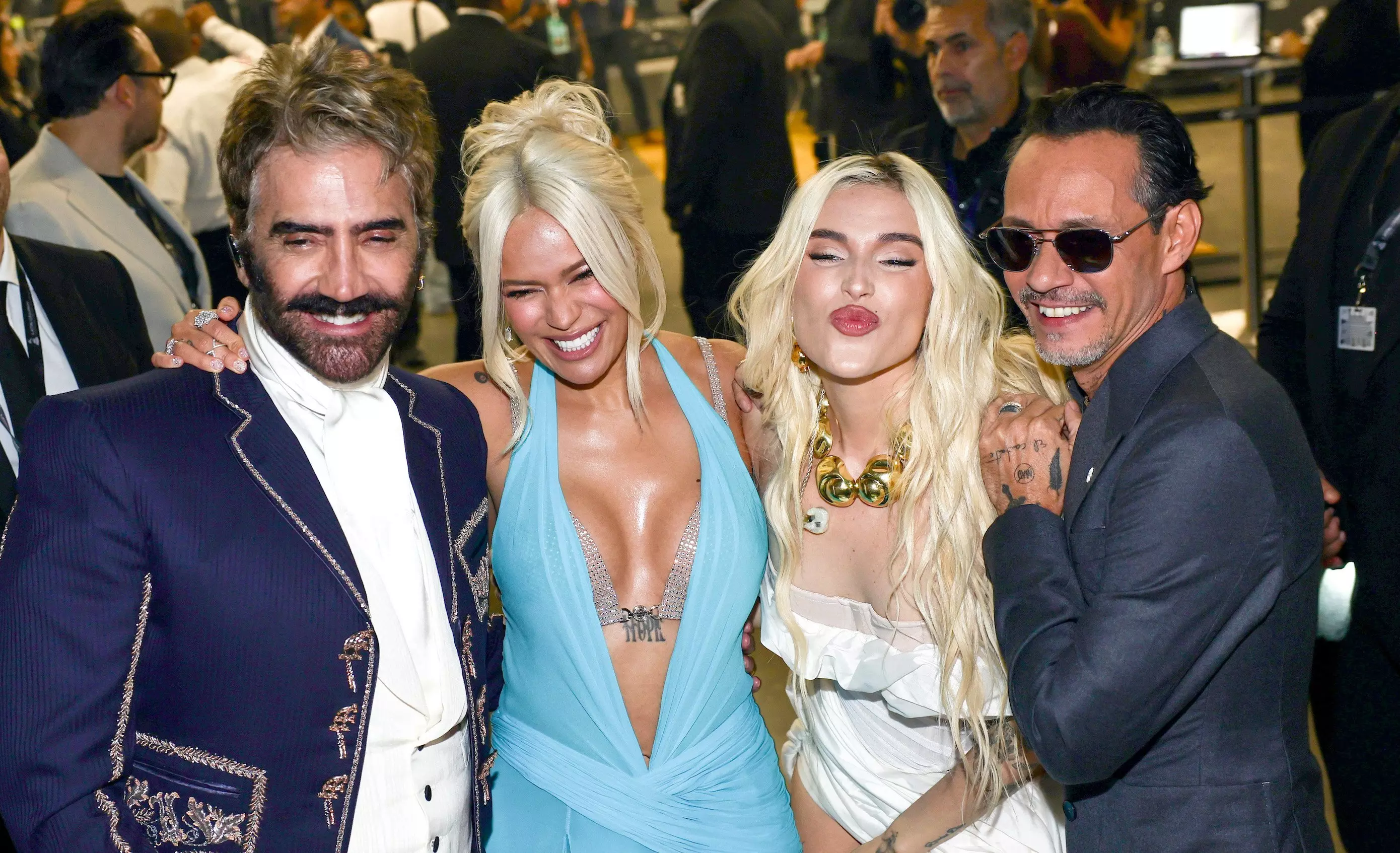
10 Meaningful Moments From The 2024 Latin GRAMMYs: Karol G's Heartfelt Speech, Tributes To Late Legends & More
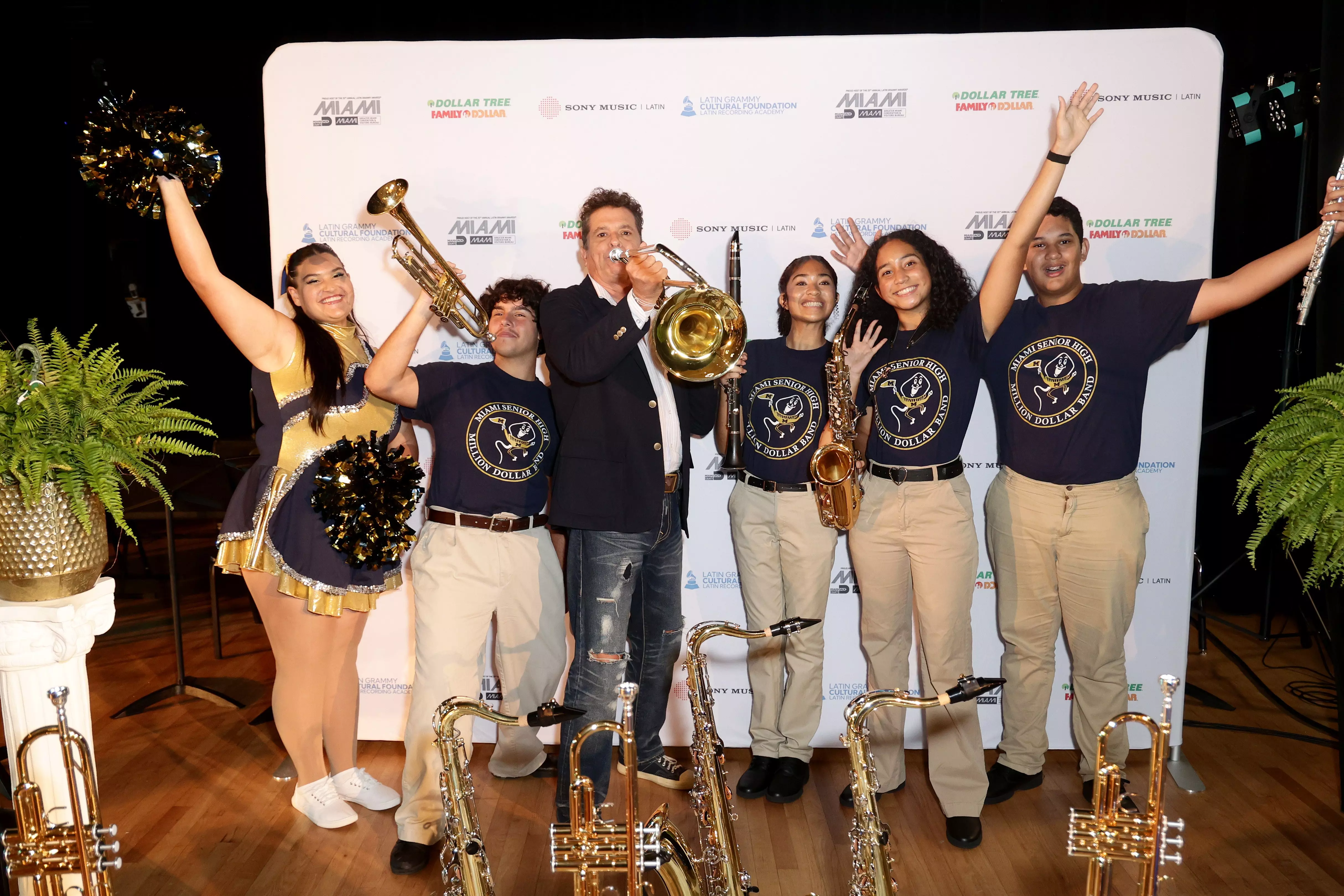
Behind The Scenes At Latin GRAMMY Week 2024: Inside VIP Celebrations & More
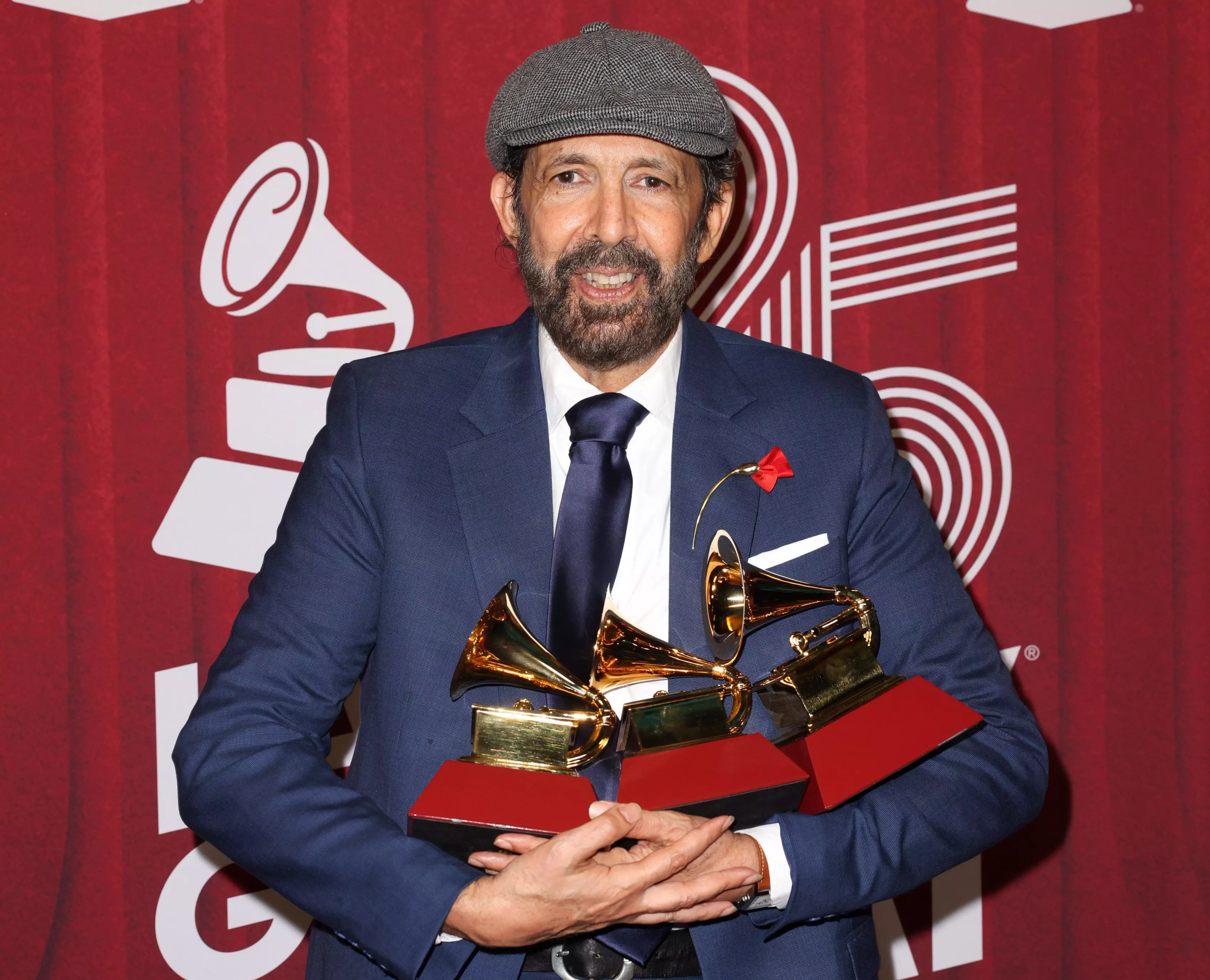
Juan Luis Guerra Sweeps The 2024 Latin GRAMMYs With 'Radio Güira'

How Gwen Stefani's New Album 'Bouquet' Celebrates A Career Built On Love In All Its Forms
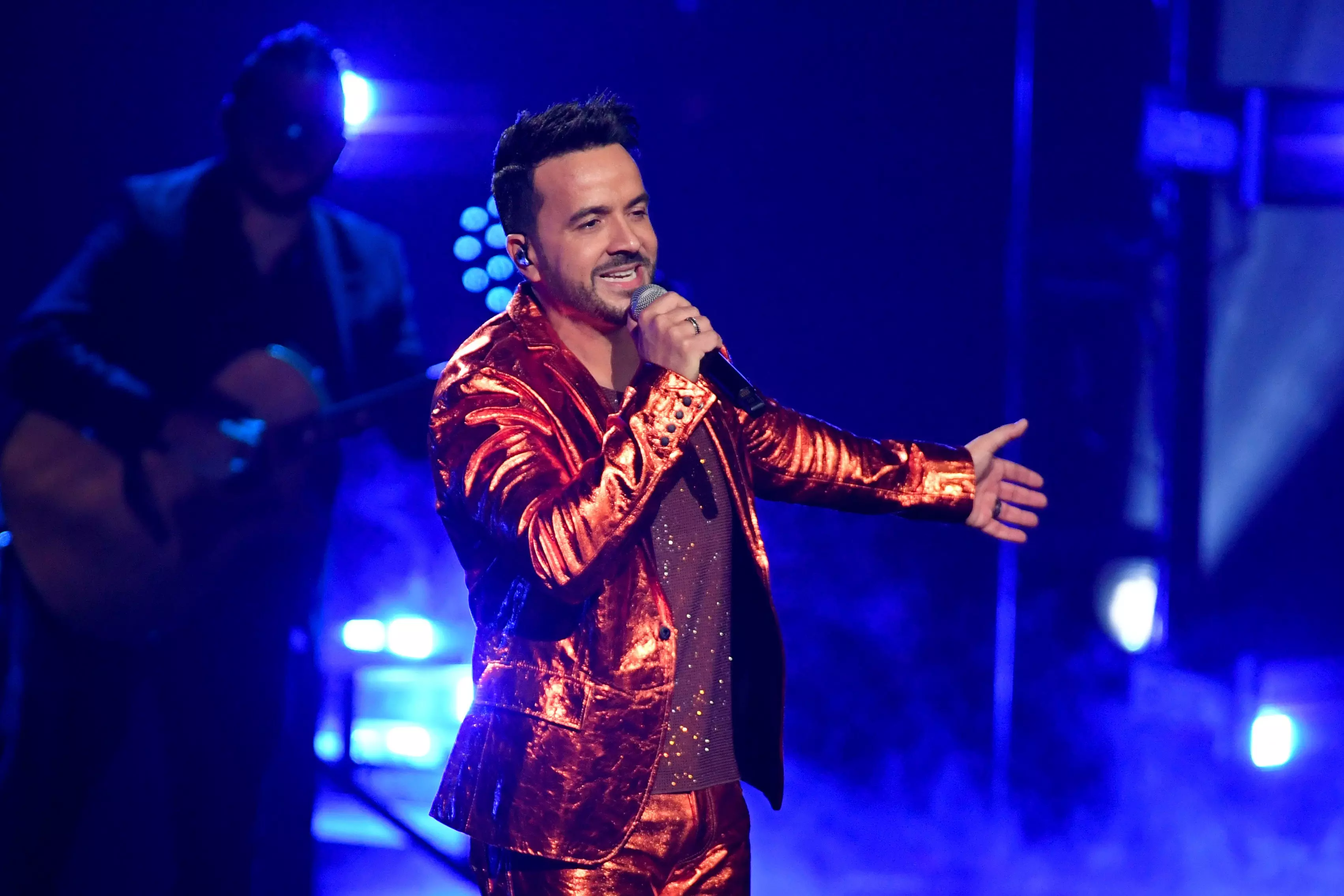
Watch: Luis Fonsi Performs "Despacito" & Two More Of His Classics At The 2024 Latin GRAMMYs
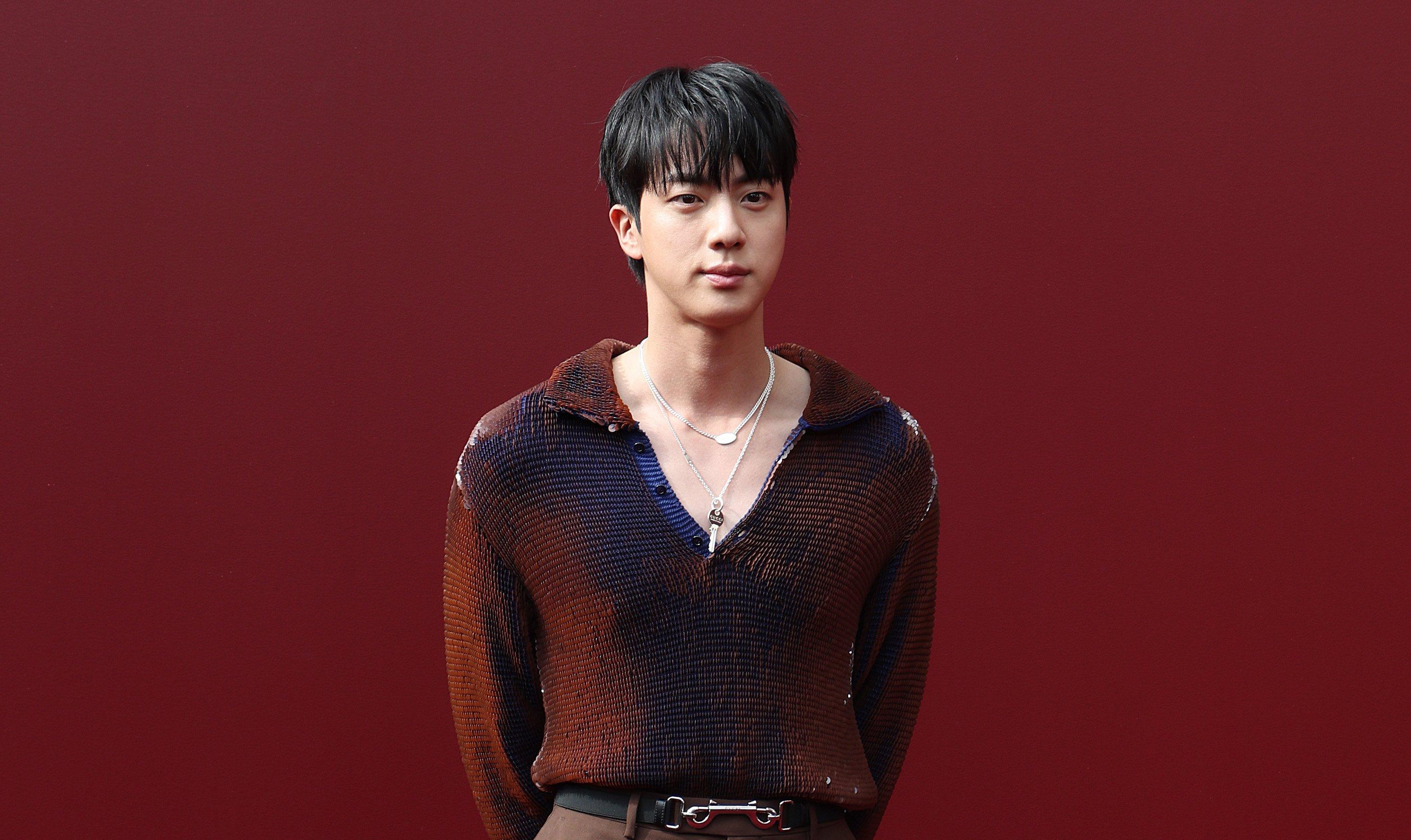
Photo: Vittorio Zunino Celotto/Getty Images for Gucci
news
New Music Friday: Listen To New Releases By Jin, Lady Gaga, Addison Rae & More
As October nears its end, dig into new albums from Bastille and MUNA's Katie Gavin, a special anniversary edition of Green Day's 'American Idiot,' and even a long-awaited new track from Sade.
It's the final New Music Friday before Halloween, and this Friday (Oct. 25), there are tricks and treats for every kind of music fan.
As she's been promising for months, Lady Gaga kicked off the roll-out for LG7 with the as-yet-untitled album's sinister lead single. And while the pop star can no longer claim it's "STILL NOT OCTOBER," the pounding track doesn't give Little Monsters any more insight into those cryptic posts on their queen's social media feed.
Elsewhere, Green Day celebrates a major anniversary for one of the band's most beloved albums, Jin makes his return with an upbeat single, G Herbo drops the deluxe version of his latest full-length, and Addison Rae ascends to higher pop girl status by paying reverence to Madonna.
Below, press play on nine new releases to round out your spooky season playlists.
Lady Gaga — "Disease"
Lady Gaga launches her hotly anticipated LG7 era with "Disease," a glitchy, industrial lead single that's sure to serve as a cure-all for many a Little Monster's pop music maladies.
Casting aside the Great American Songbook she sang circles through on the recently released Harlequin, Gaga opts to return to a darker, more techno-infused aesthetic on the track, which sounds like a spiritual descendent of Born This Way-era deep cuts like "Government Hooker" and "ScheiBe" with shades of "Alejandro" thrown in for good measure.
"Poison on the inside/ I could be your antidote tonight," the superstar promises on the throbbing pre-chorus before snarling, "I could play the doctor, I can cure your disease/ If you were a sinner, I could make you believe/ Lay you down like 1, 2, 3/ Eyes roll back in ecstasy/ I can smell your sickness, I can cure ya/ Cure your disease." Consider us infected, Mother Monster.
Jin — "I'll Be There"
It's been an exciting month for the BTS ARMY! Just eight days after j-hope completed his military service, Jin — who was the first BTS member to be discharged earlier this year — unveiled a brand new single, "I'll Be There."
The rockabilly-inspired, high-energy song is a preview track from Jin's forthcoming debut solo album, Happy, which arrives Nov. 15. As Jin's first solo music since 2022's "The Astronaut," the guitar-charged "I'll Be There" hints that his album may feature more rock influence than his previous solo releases.
As Jin switches from Korean to English across the song, he makes fans a sweet promise in the chorus: "I will be there forever (Forever)/ I don't change/ I'll be there for you/ There for you, oh-oh-oh/ I'll tell you with this song/ I swear that I will always sing for you."
Green Day — 'American Idiot (20th Anniversary Deluxe Edition)'
Two decades after brashly declaring, "Don't wanna be an American idiot!," Green Day are celebrating their politically-charged pièce de résistance with a 20th anniversary re-release.
The band's punk rock opera spawned four hit singles, a Broadway musical, its own rock documentary (2015's Heart Like a Hand Grenade) and a tidal wave of pearl-clutching from the pre-MAGA conservatives of the early 2000s — not to mention GRAMMY wins for Best Rock Album and Record Of The Year. The album's latest, well-deserved victory lap includes a treasure trove of bonus material for fans, including 15 unreleased demos, nine previously unreleased live recordings, and an entire 2004 concert recorded at New York City's Irving Plaza.
The four-disc 20th anniversary edition of American Idiot also arrives in a wide array of physical formats for collectors, from a Super Deluxe Box Set that include a brand-new 110-minute documentary titled 20 Years of American Idiot and new liner notes penned by producer Rob Cavallo and journalist David Fricke to vinyl and CD Box Sets each with their own unique merch.
Read More: 10 Reasons Why 'American Idiot' Is Green Day's Masterpiece
G Herbo — 'Big Swerv 2.0'
Just seven weeks after dropping the standard edition, G Herbo re-ups on his sixth studio album with Big Swerv 2.0.
The rapper's follow-up to 2022's broad double LP Survivor's Remorse gets front-loaded with seven new bonus tracks including "YN," "Dark Knight," "Clap" and "Nothin." Meanwhile, collaborations with Chris Brown (the melodic, sexual "Play Your Part"), Meek Mill (the heartfelt "Ball") and Lil Durk (emotional highlight "In The Air") add to the star-studded list of guest features on the LP, which already included the likes of 21 Savage, Sexyy Red, Chief Keef, and others.
Katie Gavin — 'What a Relief'
After three albums of shimmering, intimate indie pop with MUNA, frontwoman Katie Gavin strikes boldly out on her own with the release of her debut solo album What a Relief.
Pre-release singles "Aftertaste," "Casual Drug Use" and "Inconsolable" each made clear that the queer icon in the making would be spreading her wings on the LP, but she continually mines both new sonic terrain (the fiddle-riddled "The Baton," the sour '90s-alt of "Sanitized") and undiscovered layers of lyrical vulnerability (heartrending love song "Sweet Abby Girl") throughout its 12 tracks.
Gavin recruits Mitski, meanwhile, for the album's emotional cornerstone, which makes a lifetime of quiet domesticity and resolute partnership sound "As Good As It Gets."
Bastille — '"&" (Ampersand)'
No story is taken solo on Bastille's new full-length, "&" (Ampersand). Yes, every song on the English pop band's fifth studio effort contains the connective punctuation mark of its title, from opening salvo "Intros & Narrators" to inventively titled album cuts like "Drawbridge & The Baroness" and "Mademoiselle & The Nunnery Blaze."
Frontman Dan Smith gives insight into the album's storybook-like approach in the swirling opener, singing, "Maybe, to me, other stories are more interesting/ Maybe, to me, they're a mirror back on everything." By the end of "Intros & Narrators," however, he warns, "Never lay your trust in the narrator," so it's up for each listener to come to conclusions about the meaning of the 13 musical fables he and the band then lay out about Eve, Marie Curie, Oscar Wilde, the Greek myth of Narcissus, legendary 19th century Chinese pirate Zheng Yi Sao and more.
Addison Rae — "Aquamarine"
Fresh off her viral appearance at the Madison Square Garden stop of the Sweat Tour alongside Troye Sivan, Charli XCX and Lorde, Addison Rae continues to step into her power as a rising pop star with new single "Aquamarine."
"The world is my oyster/ Baby, come touch the pearl," she nonchalantly declares at the outset over the track's gauzy, glittering production. (And is it just us, or is that a clever reference to Madonna's "Ray of Light" in the second verse?)
The song's chic music video, meanwhile, begins as a party girl's tour de Paris — complete with an avant-garde masquerade, Louboutins walking dimly lit streets and spritzes of Chanel No. 5 — before morphing into a transfixing, lyrical dance break with the kind of vogueing that would make Her Madgesty proud.
BØRNS — "Letting Myself Go"
BØRNS might just be falling to pieces. Or at least that's what the indie rocker thinks on his single "Letting Myself Go."
The simplistic visual for the track opens with a home video of the artist born Garrett Borns as a toddler, adorably demanding, "Stop singing, I want everybody to hear what I'm singing!" From there, the grown-up BØRNS' inner monologue takes center stage as he wonders aloud, "Do I have to burn the pages/ Written in my heart?/ I'm done running through the mazes/ Tell me how to break the cages/ Now I know/ And I can't wait another second/ I think it's time I let myself go."
Sade — "Young Lion"
Red Hot Organization teases its forthcoming concept album TRANƧA with a five-track EP, TRANSA: Selects. The project features Sade's first release in six years, which marks perhaps one of the most personal songs of her career: "Young Lion," a stirring and hopeful ballad dedicated to the four-time GRAMMY winner's son Izaak, who came out publicly as trans in 2016.
"Young man/ It's been so heavy for you/ You must've felt so alone/ The anguish and pain, I should've known," Sade sings over downcast orchestration, pleading with her son for forgiveness for not intuiting his struggle before telling him, "You shine like a sun." (For his part, Izaak effusively thanked his famous mom for supporting his transition back in 2019.)
TRANSA: Selects also includes previously releases collaborations between Sam Smith and Beverly Glenn-Copeland ("Ever New") and Lauren Auder and Wendy & Lisa ("I Would Die 4 U") as well as a 26-minute experimental opus in allyship by André 3000 titled "Something Is Happening And I May Not Fully Understand But I'm Happy To Stand For The Understanding."
The full TRANƧA compilation will arrive Nov. 22, and, according to a press release, "highlights the gifts of many of the most daring, imaginative trans and non-binary artists working in culture today, and celebrates the beauty of trans life."
The Latest Pop Music News & Releases
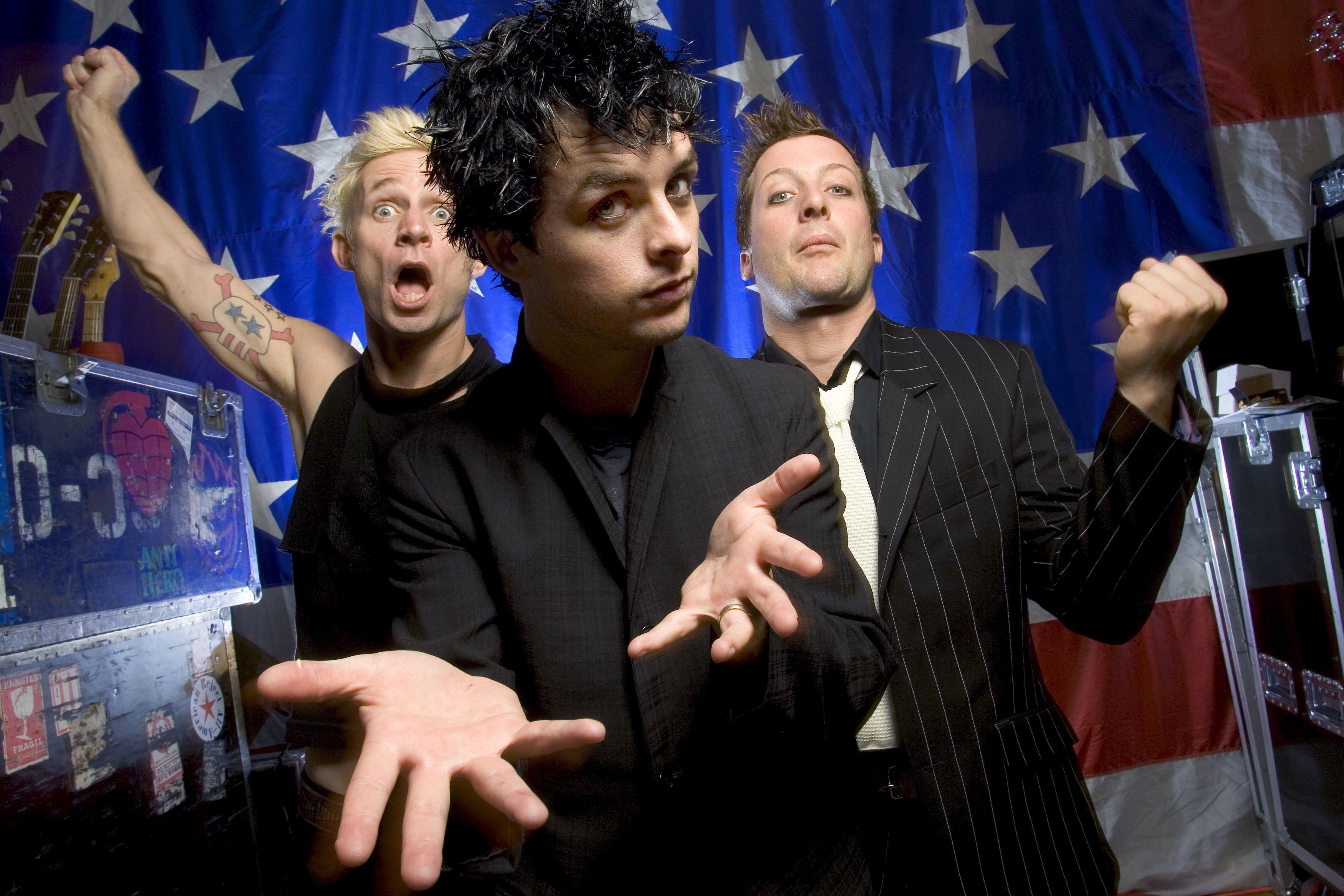
Photo: Kim Kulish/Corbis via Getty Images
list
10 Reasons Why 'American Idiot' Is Green Day's Masterpiece
In the midst of Green Day's Saviors Tour, the group's seminal 2004 album turns 20. In honor of the anniversary, dig into all of the ways it became the band's magnum opus.
Green Day looked in danger of slipping into irrelevancy following the underperformance of 2000's Warning and 2001's International Superhits collection that reaffirmed they'd lost their creative mojo. Instead, the Californian punk rockers staged one of the most triumphant comebacks of the decade with a blockbuster that served as both a grandstanding rock opera and furious state of the nation address: American Idiot.
Frontman Billie Joe Armstrong, bassist Mike Dirnt, and drummer Tré Cool had initially planned to return with Cigarettes and Valentine, a bizarre-sounding collection of polka, salsa and smutty reworkings of festive classics. But they were forced to start from scratch when its demo master tapes were stolen, a crime that proved to be a blessing in disguise.
Indeed, encouraged by regular producer Rob Cavallo, the four-time GRAMMY-winning trio hit several Hollywood studios determined to better what they'd laid down before. And over a five-month period in which they fully embraced the hard-partying rock 'n' roll lifestyle, the band took their frenetic sound into previously uncharted waters, embracing everything from political diatribes to musical theater.
The result was a sprawling, near-hour-long masterpiece that told the story of a wayward teen desperate to leave his dead-end hometown, while simultaneously leaving a certain United States president's ears burning. Twenty years after American Idiot's release, here's a look at how the record immediately put Green Day back on rock's A-list, and why it's remained a pop culture touchstone ever since.
It Made Punk Rock Matter Again
Green Day may have been responsible for ushering in the likes of Blink-182, Sum 41, and practically every other pop-punk outfit who broke through at the turn of the century. But by the time they came to record their seventh LP, the trio essentially believed they'd created a monster.
"It just seemed trivial," Armstrong later told Billboard about the scene, being careful not to name any specific names. "It seemed really generic, and I didn't really like it at all. The subject matter was just really shallow."
While most of the groups they inspired were largely concerned with cars, parties and girls, Green Day took the genre back to its socially and politically conscious roots. Whether rallying against the injustices of the Bush administration or decrying the state of the modern media, American Idiot proved punk rock could have substance to its style.
It's Still Relevant Today
Cool once revealed that American Idiot was born out of a desire to "make the world a little more sane." Unfortunately, 20 years on, its rabble-rousing themes are still wholly relevant — well, for one half of the political spectrum, anyway.
Even with George W. Bush no longer in power, Green Day (and their fans) have found ways to make "American Idiot" a message to future presidents. While performing at the 2019 iHeartRadio Music Festival, Armstrong altered the title track to reflect their disdain toward one of Bush's successors, Donald Trump: "I'm not part of a MAGA agenda."
The year previously, UK protestors against the 45th launched a campaign to get "American Idiot" to No. 1 in time for his visit with the Queen. And much to the ire of Elon Musk, the band rung in 2024 by once again voicing their anti-Trump sentiment at "Dick Clark's New Year's Rockin' Eve."
It Conquered Two Big Charts
While both Dookie and Insomniac had to settle for the runner-up spot in the '90s, American Idiot finally gave Green Day that elusive No. 1 on the Billboard 200 by selling an astonishing 267,000 copies in its first seven days. It remained in the Top 10 of the chart for more than a year, becoming the third biggest-selling LP of 2005 in the process.
It also gave the trio a long overdue debut hit on the Billboard Hot 100. Yes, despite a decade-long career in which they ascended to the top of the punk rock chain, Green Day had remarkably never reached the main singles chart until "American Idiot" peaked at No. 67. But it would be far from their last visit: "Boulevard of Broken Dreams" reached No. 2, "Holiday" landed at No. 19, and "Wake Me Up When September Ends" peaked at No. 6.
It Revived The Rock Opera
The rock opera had fallen out of favor since the 1970s golden period that spawned The Who's Tommy, Pink Floyd's The Wall and Meat Loaf's Bat Out of Hell. Still, Green Day were determined to revive the art form with a record that placed just as much emphasis on narrative as blistering pop-punk.
When the trio weren't taking aim at the Bush administration, they were telling the story of "Jesus of Suburbia," a disenfranchised teenager raised on "soda pop and Ritalin," and his attempt to leave his working-class suburban hometown. As he heads for the big city, he also meets polar opposite revolutionaries named Whatsername and St. Jimmy, who, in a twist that M. Night Shyamalan would be proud of, is revealed to be his alter-ego.
Good luck trying to make sense of the plotline, which tackles everything from suicide and drug addiction to the fall of the American Dream — all the while, swerving any kind of concrete resolution. Nevertheless, the journey is consistently entertaining.
It Wasn't Afraid To Go Big
In an age when certain artists are pandering to the miniscule attention spans of the TikTok generation, the idea of a mainstream band placing not just one but two nine-minute epics on the same album seems perverse. Back in 2004, though, Green Day personified that old adage of "go big or go home."
A concerted attempt to write a pop-punk version of "Bohemian Rhapsody," "Jesus of Suburbia" incorporates thrash metal, heartland rock, and twinkling acoustic pop while setting the story in motion. Also split into five parts, penultimate number "Homecoming," meanwhile, reveals that the protagonist ended up back where he started amid a similarly ambitious musical collage in which Cool and Dinrt are given a rare opportunity to take center stage. The two-minute "Rebel Girl," however, showed that the trio could still be just as effective in short, sharp bursts.
It Spawned An Alternative National Anthem
"Wake Me Up When September Ends" is the emotional crux of American Idiot, a heartfelt rock ballad in which Armstrong addresses the grief he continues to feel over his dad's death ("Like my father's come to pass/ Twenty years has gone so fast"). However, it's since taken on a life of its own, being adopted as an anthem of healing for multiple world events.
Considering its title, and the fact it was released just three years after 9/11, it's little surprise that "Wake Me Up" is often interpreted as a meditation on one of the darkest days in recent American history. It also went viral in 2005 after being paired with footage of Hurricane Katrina, with the band later performing the track at benefit concert ReAct Now: Music and Relief. Then, in 2020, Armstrong recorded a solo version for the COVID-19 relief charity livestream One World: Together At Home.
It Made Awards History
Green Day are the first, and still the only, band, to win the MTV Video Music Award for Video Of The Year and the GRAMMY for Record Of The Year GRAMMY with the same song. "Boulevard of Broken Dreams" was awarded the former in 2005 at a ceremony where the band cleaned up with a total of seven gongs. And it was crowned the latter in 2006, a year after American Idiot had picked up Best Rock Album and received a further five nominations, too.
It Built A Legacy
American Idiot's legacy didn't end when the final single was sent to radio in October 2005. A month later, Green Day immortalized its accompanying tour with Bullet in a Bible, a live album recorded at the Milton Keynes National Bowl. In 2015, a documentary about the LP's recording, Heart Like a Hand Grenade, premiered at the Mill Valley Film Festival. And the band have continually celebrated the record, issuing a 20th anniversary special edition and performing it in full during their recent tour.
Of course, the album's biggest spinoff has been the same-named musical that took Broadway by storm upon its 2010 debut. Expanding on the album's coming-of-age narrative, American Idiot enjoyed a 422-show run at the Berkeley Repertory Theatre and St. James Theatre, occasionally starring Armstrong himself in the role of St. Jimmy. Despite winning two Tony Awards in 2010 and a Best Musical Show Album GRAMMY in 2011, the show closed in April 2011; sadly, after years of behind-the-scenes negotiations, a planned big-screen adaptation was shelved.
It Was A Visual Feast
Inspired by the art of Chinese communist propaganda, American Idiot's front cover was adorned with a blood-soaked fist gripping a hand grenade shaped like a heart. Its striking black-and-red imagery was reflected in the band's two-tone uniform, too, while the campaign's music videos also helped to consolidate the era as Green Day's most aesthetically-striking.
In the title track promo, for example, the trio perform in front of the American Flag — a green version, of course — whose stripes gradually melt onto the warehouse floor. Its director, Samuel Bayer, also cleverly used a Mercury Monterey convertible to segue the Vegas partying of "Holiday" into the roadside comedown of "Boulevard of Broken Dreams." And "Wake Me Up When September Ends" cast Hollywood stars Evan Rachel Wood and Jamie Bell in a cinematic mini-movie about a soldier sent to the Iraq War. Little wonder that the band cleaned up at the MTV VMAs.
It Borrowed From The Greats
American Idiot was perhaps always destined to be a multi-medium, multi-million-selling blockbuster. After all, the band took inspiration from the cast recording of Jesus Christ Superstar, David Bowie's concept album The Rise and Fall of Ziggy Stardust and the Spiders from Mars, and the chart-topping nu-metal of Linkin Park during its recording.
You can also hear elements of The Clash's London Calling on "Are We The Waiting," the melodies ofJohn Lennon and Paul McCartney on quieter moments such as closer "Whatsername," and Hüsker Dü 's Zen Arcade in its overarching narrative of a disillusioned youngster who discovers that the wider world isn't the utopia he anticipated. The band even managed to rope in one key inspiration, Bikini Kill's Kathleen Hanna, to narrate the note Whatsername sends Jesus in "Letterbomb." By borrowing from such classic source material so efficiently and effectively, American Idiot became one of the greats itself.
Explore The World Of Rock

How Gwen Stefani's New Album 'Bouquet' Celebrates A Career Built On Love In All Its Forms
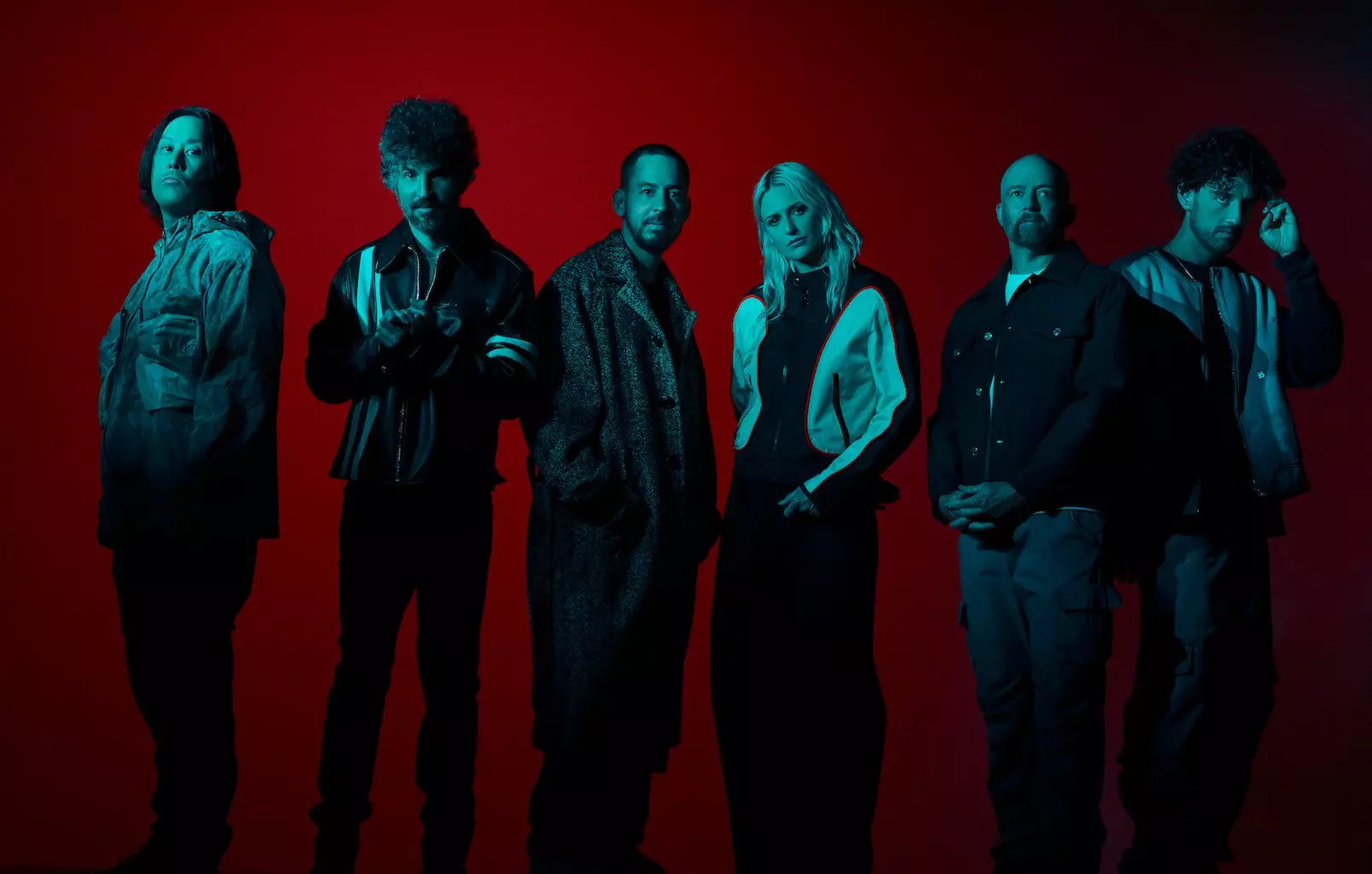
How Linkin Park's New Album Honors Chester Bennington
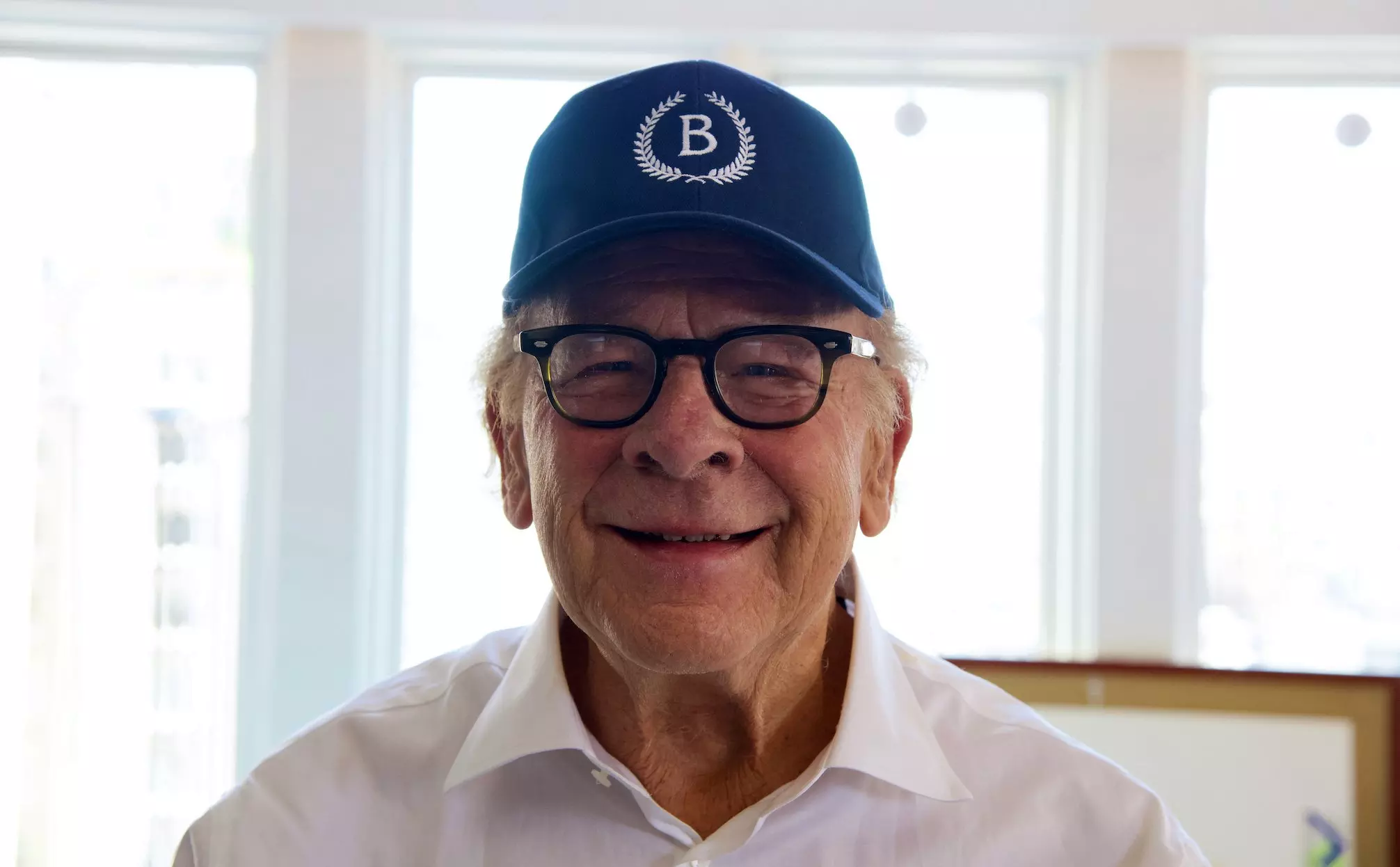
Living Legends: Art Garfunkel On New Album 'Father And Son,' Following His Muse & "The Greatest Thrill Of My Performing Life"
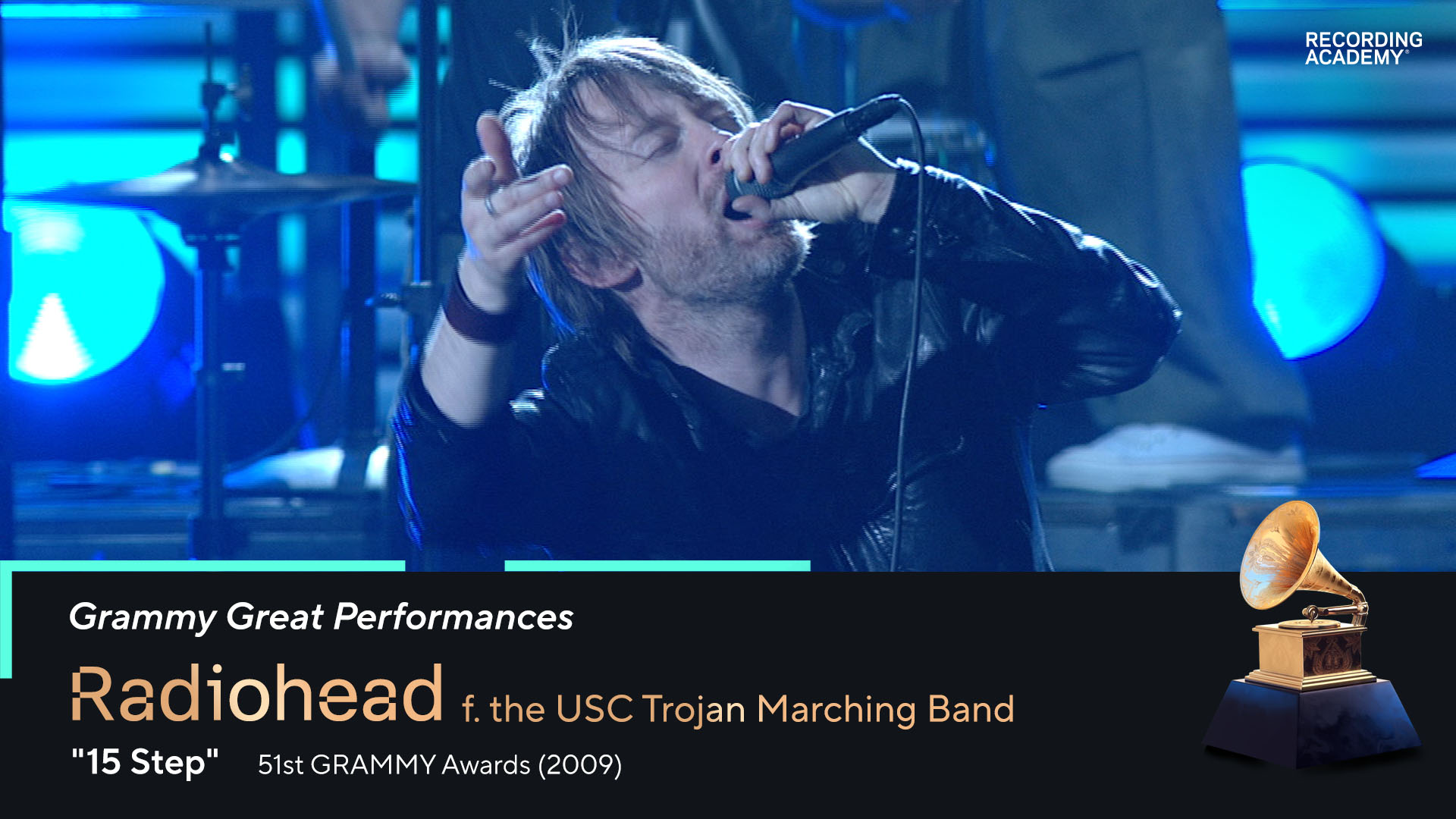
Radiohead Performs "15 Step" At The 2009 GRAMMYs
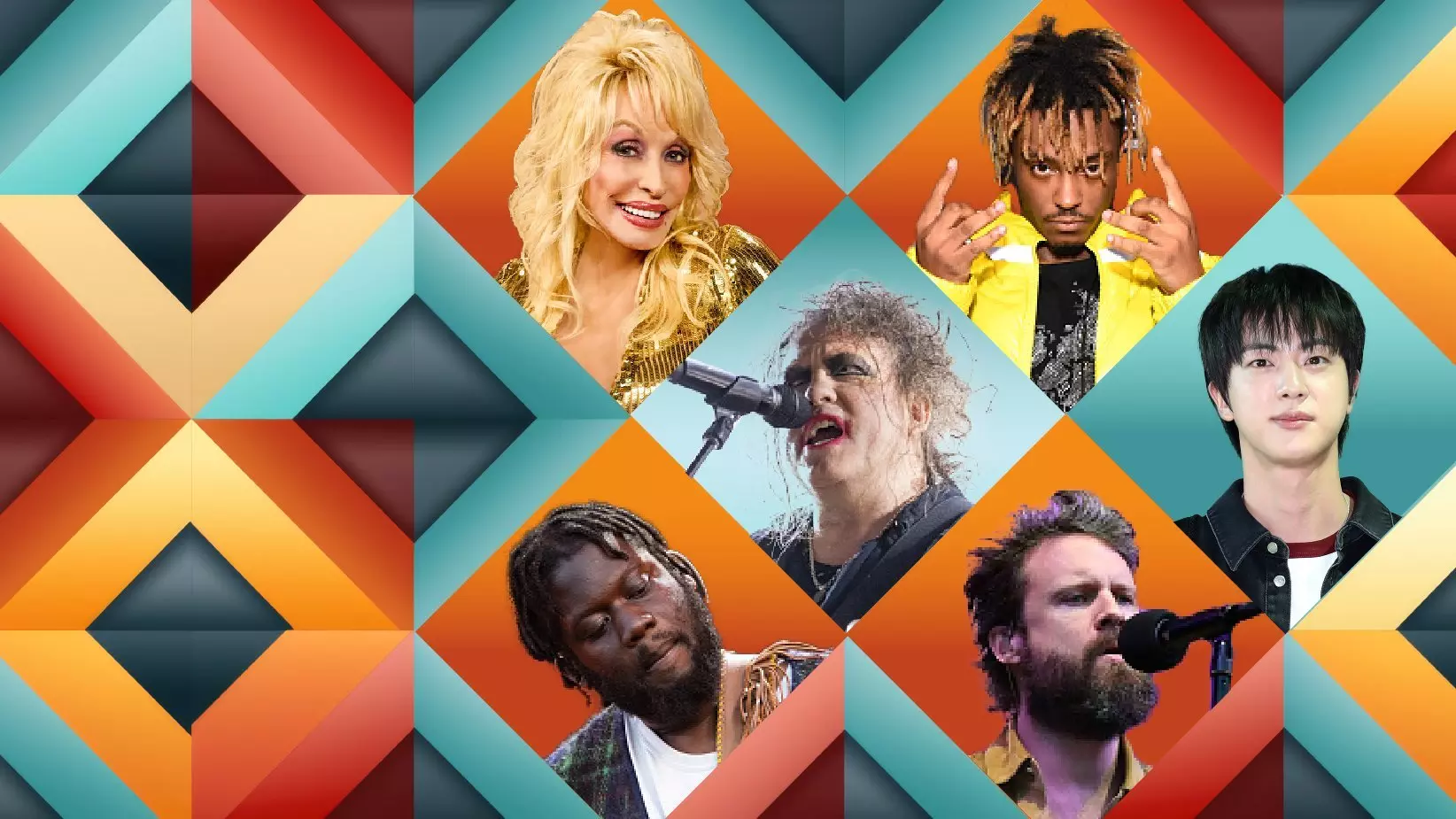
14 Must-Hear Albums In November: The Cure, Dolly Parton, Jin Of BTS, Ab-Soul, & More
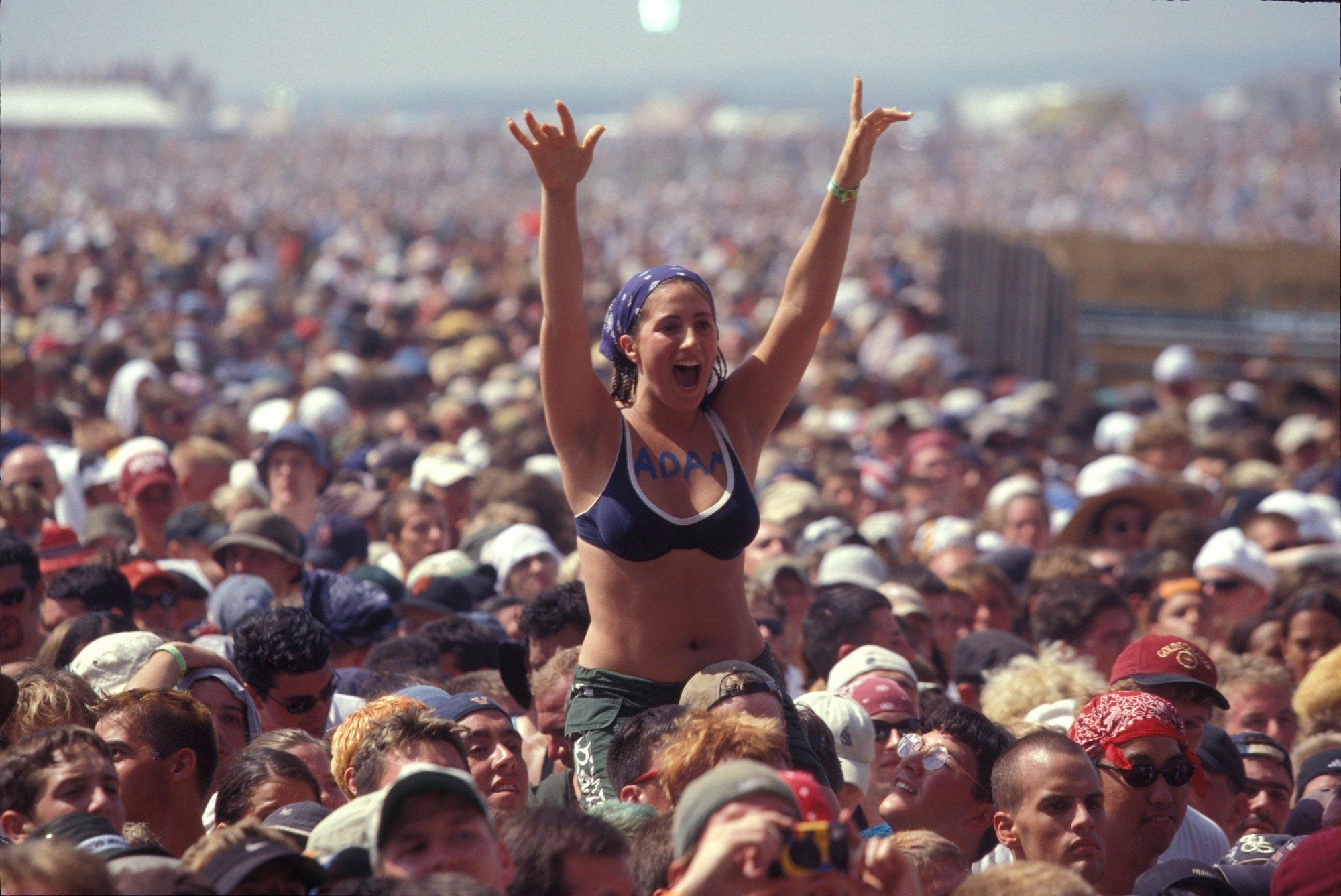
Photo: Getty Images/John Atashian
feature
On This Day In Music: Woodstock '94 Begins In Upstate New York
Held 30 years ago Aug. 12-14, Woodstock '94 featured an eclectic (and muddy) lineup that launched Nine Inch Nails, Green Day and others into the limelight.
Woodstock '94 is no middle child music festival. While not as groundbreaking as Woodstock '69 or as infamous as Woodstock '99, Woodstock '94 boasts a unique legacy that deserves recognition.
Held Aug. 12-14 in the Hudson Valley town of Saugerties, New York, Woodstock '94 was set to commemorate the silver anniversary of the original Woodstock festival in 1969. Nodding to its origins in '69, Woodstock '94 was billed as "2 More Days of Peace and Music" (a third day of the festival was eventually added).
Woodstock '94 featured a wide range of acts that both reflected the nostalgia of Woodstock '69 and highlighted a myriad of new groups. Original Woodstock performers such as Crosby, Stills & Nash (minus Neil Young) and Santana topped the bill, and now-household names including Green Day and Red Hot Chili Peppers performed some of their earliest festival sets.
Even Bob Dylan, who initially declined an appearance at Woodstock '69 despite living near the festival at the time, had a change of heart and agreed to play at Woodstock '94.
It seemed that everyone wanted to capture a sliver of the magic from the original Woodstock. Although roughly 164,000 tickets were sold, the actual number of attendees exceeded 350,000 (surpassing even Coachella 2024's attendance rates).
Spirits were high as the festival opened on Friday with dry, sunny skies highlighting performances from Sheryl Crow, Collective Soul, and others. By the weekend, the weather took a turn and transformed the festival grounds at Winston Farm in Saugerties into a giant muddy puddle. Although Woodstock '69 was also rainy and mud-filled, the madness that ensued at Woodstock '94 led it to be dubbed "Mudstock."
As Primus performed "My Name Is Mud" on Saturday, festival-goers seized the opportunity to fling the wet dirt at the band on stage.
"Once I started singing the words to "My Name Is Mud," all of a sudden huge chunks of sod started flying my way and it was pretty frightening," Primus' lead singer told Billboard 20 years later. "I still have those [speaker] cabinets to this day, and those cabinets still have mud in them."
With high energy from Friday's acts and some mud-induced chaos, attendees were buzzing with anticipation and excitement for the rest of the weekend. The party atmosphere continued throughout day two — and not solely because Blind Melon lead vocalist Shannon Hoon strolled on stage tripping on acid, wearing his girlfriend's dress.
Aerosmith may have been day two headliners, but Nine Inch Nails' 15-song set remains a highlight of Woodstock '94. The band drew the biggest crowd of the festival, and were catapulted into wider mainstream visibility. Taking advantage of the unpredictable weather, then-bassist Danny Lohner pushed lead vocalist Trent Reznor into the mud, prompting Reznor to retaliate. The other members of the band soon joined in on the fun, strutting onto the stage covered in mud.
Opening with Pretty Hate Machine's "Terrible Lie," NIN turned the massive audience into a giant mosh pit and maintained that high energy until the end of the set. While the band faced technological difficulties onstage, it only seemed to enhance their raw, gritty image.
The set was so celebrated that it is forever memorialized in the Rock & Roll Hall of Fame, with art installations featuring a life-sized mannequin replica of Reznor singing into the microphone and his keyboard, both covered in mud.
By day three, Woodstock '94 was clearly becoming an iconic music festival that would be discussed for years to come. If Saturday's mud-slinging electric performances weren't enough, the final day of the festival featured performances from Green Day, Red Hot Chili Peppers, Bob Dylan, Santana, and others.
When Green Day — fresh off the success of their third studio album Dookie — took the stage, all hell broke loose. While the band was and continues to be known for their rowdy live sets, their performance at Woodstock '94 remains unmatched.
By the time Green Day started performing, the fairgrounds had turned into a full-blown mud fight. The band tried to push through the performance and embrace the chaos, but the set came to an abrupt stop when lead singer Billie Joe Armstrong told the crowd, "Everybody say shut the f— up and we’ll stop playing." When the crowd shouted the phrase back, Armstrong said goodbye on behalf of the band, and the rest of the group fled the stage.
By the end of the performance, lead singer Billie Joe Armstrong had lost his pants and the band had to be escorted out of the festival grounds by a helicopter. On their way off the stage, security confused mud-covered bassist Mike Dirnt for a crazed fan and tackled him, leaving him with five fewer teeth than he started the set with.
"He actually sheared my teeth, and I blew like five teeth. Only one of them died. I fixed the rest of them, but he all sheared up the back of my teeth," Dirnt confessed to The Aquarian in 2013. "It was horrible. But the great thing about it is that I was able to get out of there, and I'd do it again tomorrow if I had to."
Peter Gabriel closed out the weekend by remaining true to the original mission of the festival, offering fans peace filled with good vibes. Gabriel's music, though deeply contrasting with the hard rock and punk acts that dominated the festival, provided a flawless end to the chaos that had unfolded over the past three days.
While the 1994 installment of Woodstock hasn't basked in the same spotlight as its 1969 and 1999 siblings — the latter of which has been the subject of two documentaries in as many years — it remains far from forgotten.
Woodstock '94 stands as one of the legendary music festivals of all time. Although the rain may have soaked the grounds, turning it into a muddy catastrophe, it also nourished the roots of some of the most iconic musical acts and sent them into the mainstream media. The festival was more than just a series of performances, but rather a unique cultural event.
Latest Music Festival News
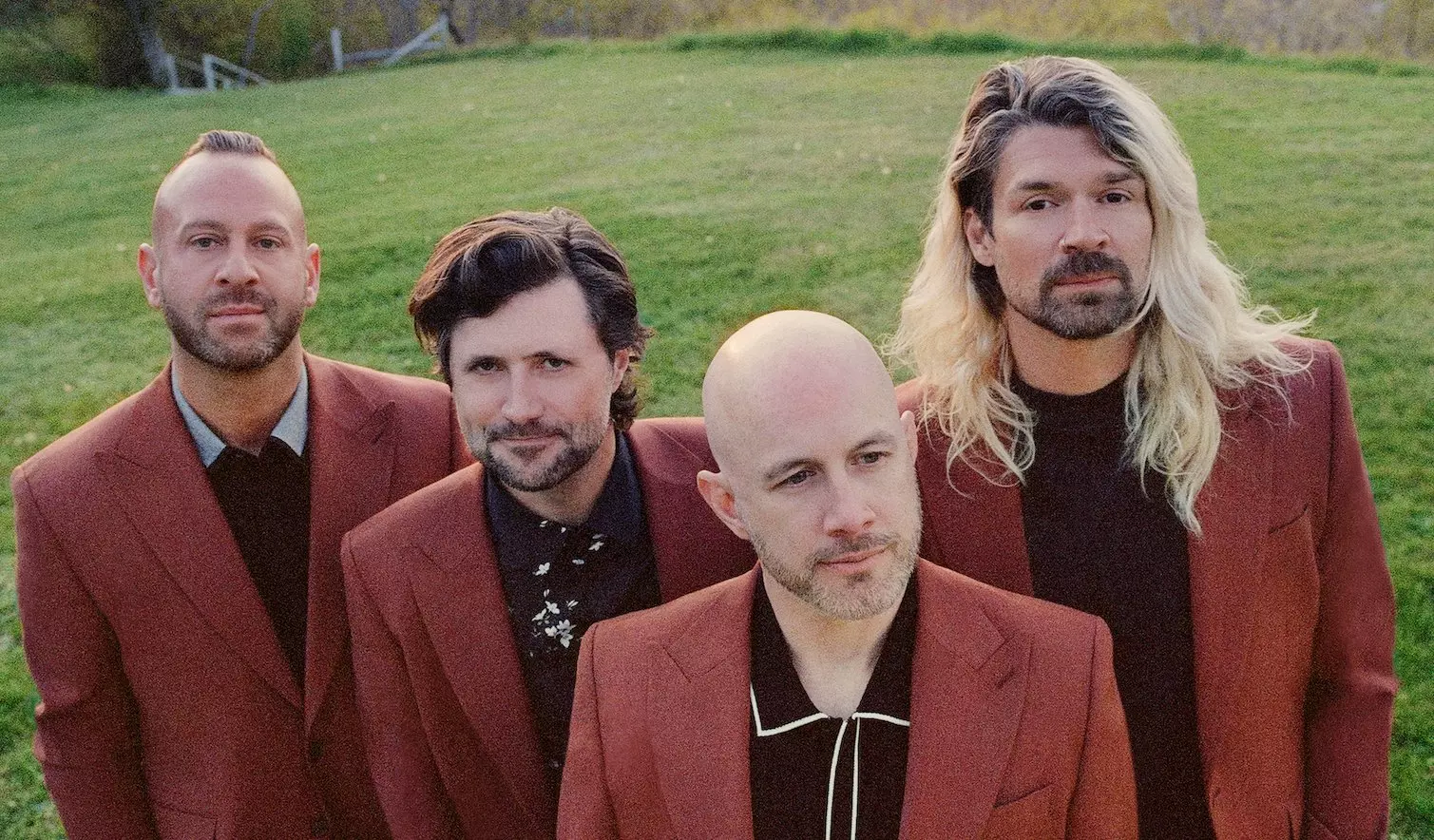
Taking Back Sunday's John Nolan Revisits 'Tell All Your Friends'
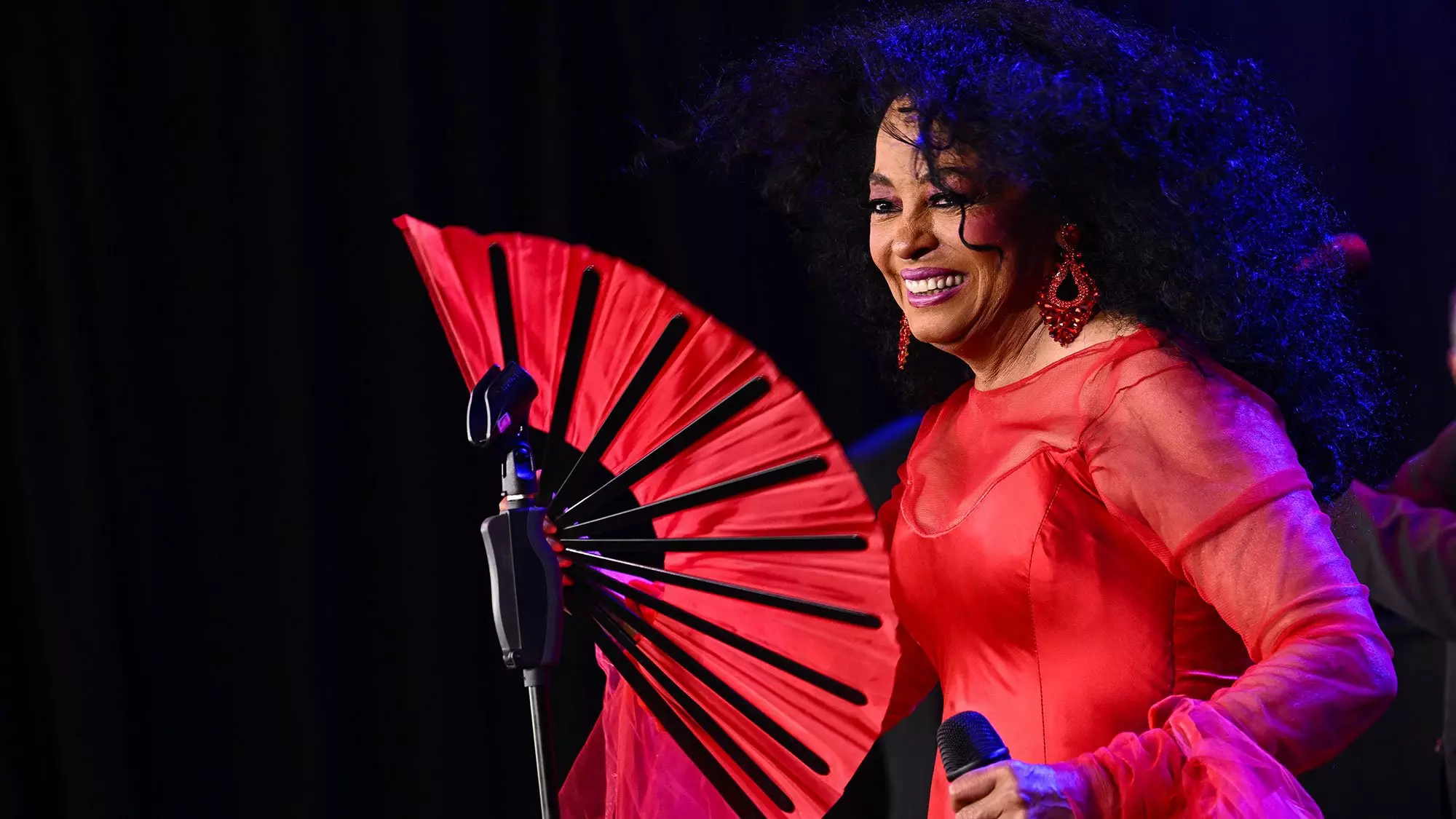
Get Ready For Fool In Love Fest With This Soulful Playlist: Hits & B-Sides From Chaka Khan, Thee Sacred Souls, Smokey Robinson & More

8 Can't-Miss Acts At Afro Nation Detroit 2024: Shenseea, Ayra Starr, Kizz Daniel & More
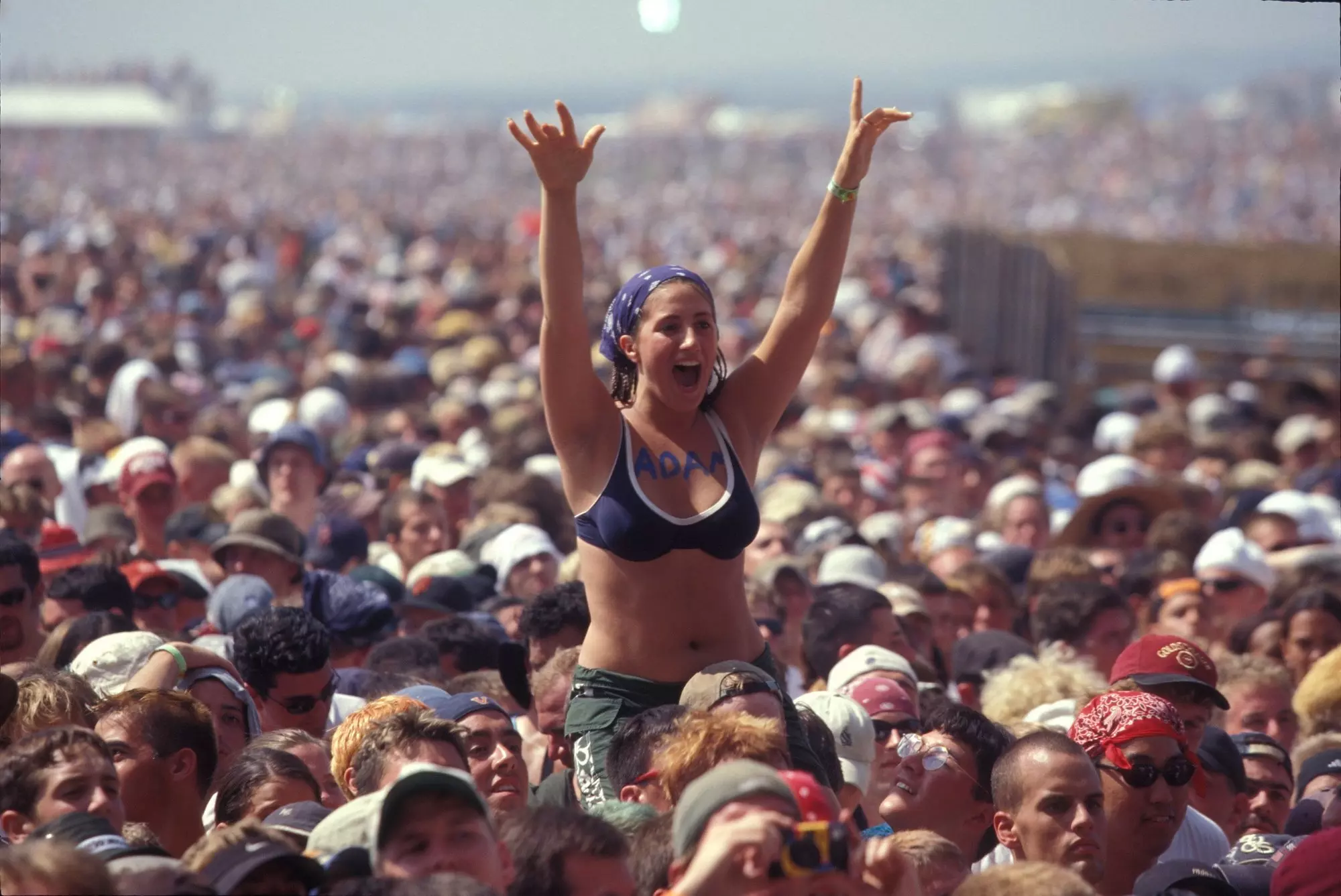
On This Day In Music: Woodstock '94 Begins In Upstate New York
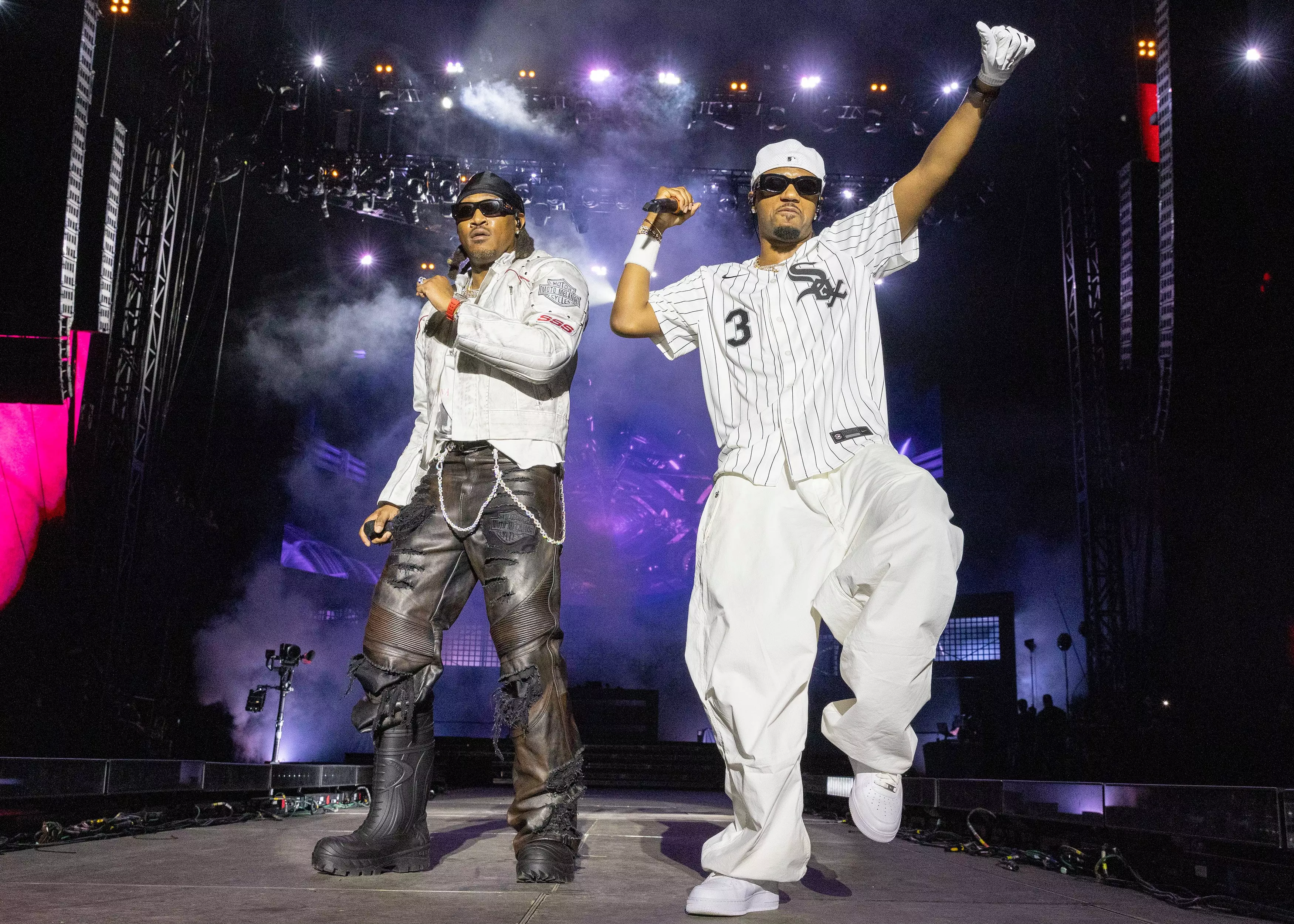
7 Stellar Sets From Lollapalooza 2024: Megan Thee Stallion, Future x Metro Boomin & More

